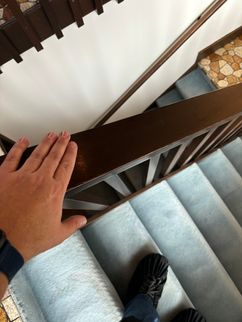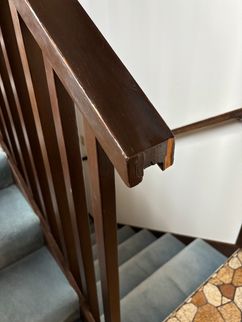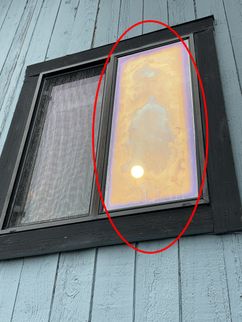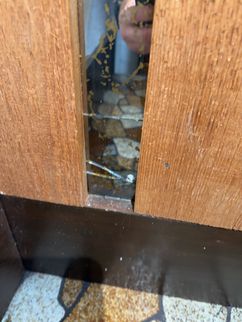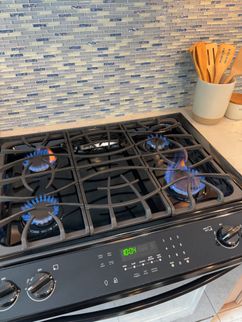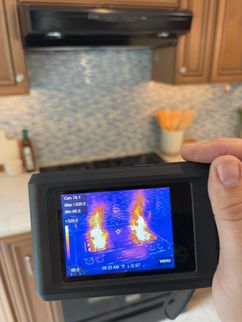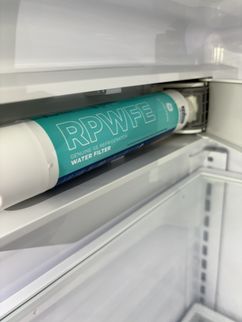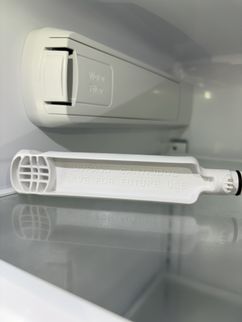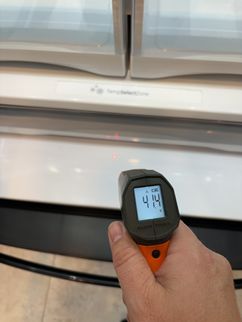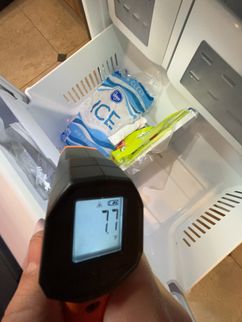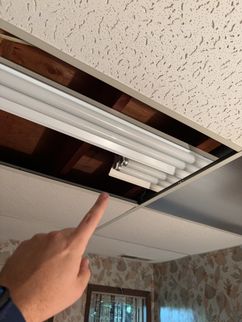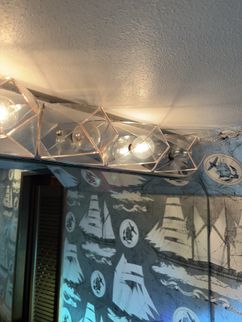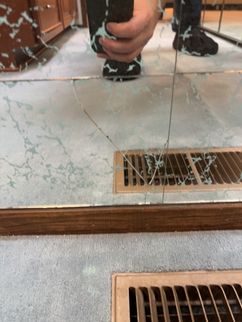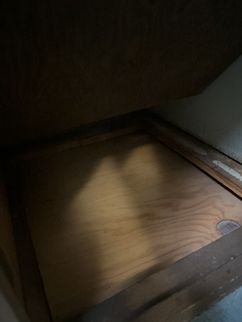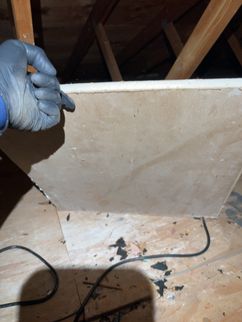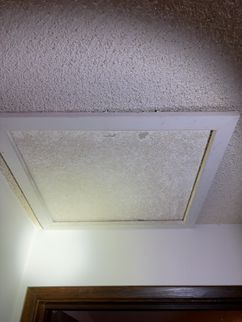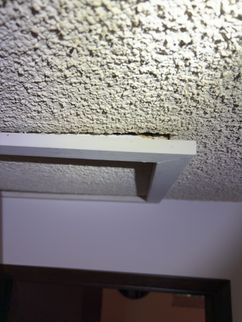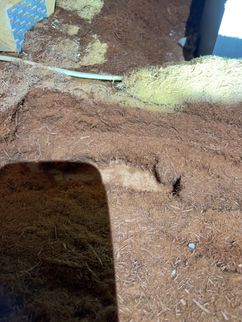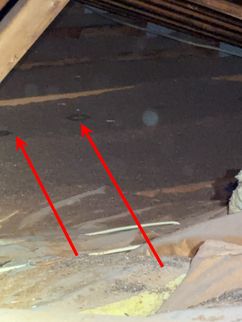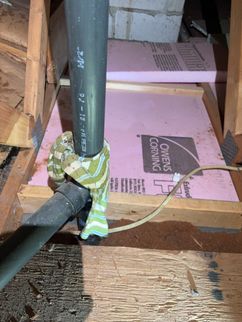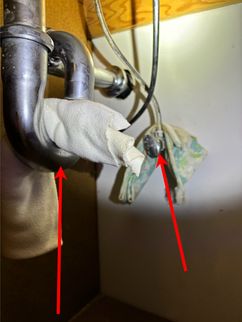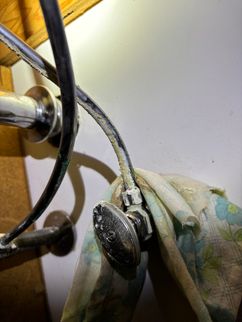The Scope and Purpose of a Home Inspection
Purchasing property involves risk
The purpose of a home inspection is to assess the condition of the residence at the time of the inspection using visual observations, simple tools and normal homeowner operational controls; and to report deficiencies of specific systems and components. Home Inspectors in WA state must perform all inspections in compliance with the standards of practice set forth by the Washington state department of licensing. *A home inspection is not technically exhaustive and does not identify concealed conditions or latent defects.*
A home inspection is not an insurance policy
This report does not substitute for or serve as a warranty or guarantee of any kind. Home warranties can be purchased separately from insuring firms that provide this service.
A home inspection is visual and not destructive
The descriptions and observations in this report are based on a visual inspection of the structure. We inspect the aspects of the structure that can be viewed without dismantling, damaging or disfiguring the structure and without moving furniture and interior furnishings. Areas that are concealed, hidden or inaccessible to view are not covered by this inspection. Some systems cannot be tested during this inspection as testing risks damaging the building. For example, overflow drains on bathtubs are generally not tested because if they were found to be leaking they could damage the finishes below. Our procedures involve non-invasive investigation and non-destructive testing which will limit the scope of the inspection.
This is not an inspection for code compliance
This inspection and report are not intended for city / local code compliance. During the construction process structures are inspected for code compliance by municipal inspectors. Framing is open at this time and conditions can be fully viewed. Framing is not open during inspections of finished homes, and this limits the inspection. All houses fall out of code compliance shortly after they are built, as the codes continually change. National codes are augmented at least every three years for all of the varying disciplines. Municipalities can choose to adopt and phase in sections of the codes on their own timetables. There are generally no requirements to bring older homes into compliance unless substantial renovation is being done.
This is just our opinion
Construction techniques and standards vary. There is no one way to build a house or install a system in a house. The observations in this report are the opinions of the home inspector. Other inspectors and contractors are likely to have some differing opinions. You are welcome to seek opinions from other professionals.
The scope of this inspection
This inspection will include the following systems unless specified in the report: exterior, roof, structure, drainage, foundation, attic, interior, plumbing, electrical and heating. The evaluation will be based on limited observations that are primarily visual and non-invasive. This inspection and report are not intended to be technically exhaustive.
Your expectations
The overall goal of a home inspection is to help ensure that your expectations are appropriate with the house you are proposing to buy. To this end we assist with discovery by showing and documenting observations during the home inspection. This should not be mistaken for a technically exhaustive inspection designed to uncover every defect with a building. Such inspections are available but they are generally cost-prohibitive to most homebuyers.
Your participation is requested
Your presence is requested during this inspection. A written report will not substitute for all the possible information that can be conveyed verbally by a shared visual observation of the conditions of the property.
How to Read This Report
Getting the Information to You
This report is designed to deliver important and technical information in a way that is easy for anyone to access and understand. If you are in a hurry, you can take a quick look at our "Summary Page” and quickly get critical information for important decision making. However, we strongly recommend that you take the time to read the full Report, which includes digital photographs, captions, diagrams, descriptions, videos and hot links to additional information.
The best way to get the layers of information that are presented in this report is to read your report online (the HTML version), which will allow you to expand your learning about your house. You will notice some words or series of words highlighted in blue and underlined – clicking on these will provide you with a link to additional information. The HTML version of this report also contains streaming videos. Short video clips often contain important information and critical context and sounds that can be difficult to capture in words and still pictures.
For the most reliable viewing experience, I recommend viewing the report on as large a screen as practical, as much detail can be lost on small devices like smart phones. For similar reasons, reports should only be printed in color to retain as much detail as possible and minimize misinterpretation of photographs.
This report can also be printed on paper or to a PDF document.
Chapters and Sections
This report is divided into chapters that parcel the home into logical inspection components. Each chapter is broken into sections that relate to a specific system or component of the home. You can navigate between chapters with the click of a button on the left side margin.
Most sections will contain some descriptive information done in black font. Observation narrative, done in colored boxes, will be included if a system or component is found to be significantly deficient in some way or if we wish to provide helpful additional information about the system or the scope of our inspection. If a system or component of the home was deemed to be in satisfactory or serviceable condition, there may be no narrative observation comments in that section and it may simply say “tested,” or “inspected.”
Observation Labels
All narrative observations are colored, numbered and labeled to help you find, refer to, and understand the severity of the observation. Observation colors and labels used in this report are:
- Repair:Repair and maintenance items noted during inspection. Please note that some repair items can be expensive to correct such as re-finishing hardwood floors, but are considered simply repair items due to their cosmetic nature.
- Recommended Maintenance:These are repair items that should be considered "routine home ownership items," such as servicing the furnace, cleaning the gutters or changing the air filters in the furnace.
- Improve:Observations that are not necessarily defects, but which could be improved for safety, efficiency, or reliability reasons.
- Monitor:Items that should be watched to see if correction may be needed in the future.
- Due Diligence:Observation such as a buried oil tank that may require further investigation to determine the severity and / or urgency of repair.
- A Note From Your inspector:Refers to side information and /or any comments elaborating on descriptions of systems in the home or limitations to the home inspection.
- Description:Detailed description of various aspects of the property noted during the inspection.
Summary Page
The Summary Page is designed as a bulleted overview of all the observations noted during inspection. This helpful overview is not a substitution for reading the entire inspection report. The entire report must be read to get a complete understanding of this inspection report as the Summary Page does not include photographs or photo captions.
Moisture Meter Testing
Where moisture meter testing is indicated in this report a Klein Moisture Meter was used.
Summary
Repairs
- G1-1 Grounds:
Eliminate siding to soil contact to reduce the chances for rot and pest damage and repair any hidden rot as needed - see southwest corner. Generally, a 6-inch clearance between soils and siding is recommended. This is often not realistic on older homes, but repairs should be made to get as much clearance as is possible and all contact with the soils should be eliminated.
- G1-2 Grounds:
The driveway has numerous typical cracks, some slightly worse and one large edge depression. Most cracks can simply be filled and sealed with an appropriate concrete caulk/sealer. The larger edge depression should be repaired. Contact a concrete contractor for further evaluation.
- ESDW-1 Exterior Siding, Doors and Windows:
Localized siding repairs are needed to the exterior. Hire a licensed general contractor to further evaluate and repair all damaged siding as needed. Please note that whenever there is damage to the siding system, there is a risk of uncovering additional concealed damage in the course of repairs.
- ESDW-3 Exterior Siding, Doors and Windows:
Wood decay was noted at numerous places around the fascia. Particularly in the corners where the rain gutters are backup up. Rain gutters should be cleared of all debris, and any rotten wood should be replaced. Contact a siding contractor to further evaluate and repair.
- DPB-2 Decks, Porches and Balconies:
Wood decay was found in parts of the guardrail system. This will require replacement of the affected areas of the deck guardrail system in the near term. At the moment, the railing still appeared to have some useful life but I would budget to replace this railing system soon.
- DPB-3 Decks, Porches and Balconies:
The concrete landing at the north deck stairs has significantly settled. I recommend having this further evaluated. The underlying settlement cause should be addressed before a new landing is installed.
- G-1 Garage:
The overhead garage door opener does not reverse under resistance to closing which is a safety hazard. Adjustment of the sensitivity is recommended for improved safety. This typically involves adjusting a small plastic screw on the opener. This video from Lift Master is a great guide to get a general idea on how to adjust sensitivity as it is similar on many makes and models. Please note that this video is specific to Lift Master, and your garage door opener might be a different brand. Always consult your specific openers manual, or contact a garage door contractor for evaluation.
- G-2 Garage:
The garage concrete slab has a larger than normal crack indicating this is likely poor preparation of the soils below the slab prior to the pour. The slab is still functional, but not ideal. It is difficult to gauge the urgency for repair here as one could live with this unless it worsens. There are signs that the garage structure has settled since it was added on to the house.
- RCG-6 Roof, Chimney and Gutters:
A rain cap and spark arrestor is recommended for the chimney flue to prevent water damage inside the flue, to reduce risks of bird and insect entry into the flue and to reduce risks from sparks exiting the flue.
- RCG-7 Roof, Chimney and Gutters:
The chimney cap is showing signs of deterioration, and should have a finish coat applied to prevent further damage. This is common of a cap this age.
- RCG-9 Roof, Chimney and Gutters:
Repair all of the loose / poorly secured downspouts. Many of the downspouts are not well secured to the home and are vulnerable to disconnecting. This could lead to water damage. Tune up all downspouts to ensure they are reliably secured.
- FSD-1 Fuel Storage and Distribution:
No sediment trap was found for the gas pipe at the gas furnace. Sediment traps are designed to prevent fouling of gas equipment by allowing sediment to fall out of the gas supply. Have this further evaluated and repaired as recommended by a qualified plumber. Sediment traps are required at all automatically controlled gas appliances.
- ES-2 Electric Service:
The electric service drop should be monitored and the trees growing around it should be trimmed back to avoid contact with the power line. The mast requires re-caulking to have a water tight seal.
- ES-3 Electric Service:
The electric panel has a bit of corrosion and requires further evaluation by a licensed electrician to ensure safe and reliable performance. Corrosion inside the panel is a red flag that the panel is having moisture problems and this could result in poor and unsafe wiring connections. Repair or replace as recommended by a licensed electrician.
- ES-4 Electric Service:
Corrosion was noted on the bus bar inside the main electric panel. This risks poor connections and should be further evaluated and repaired as recommended by a licensed electrician.
- ES-8 Electric Service:
Have the electrical bonding system checked by a licensed electrician. Adequate bonding could not be verified at the main water pipe or the pipes by the water heater. This is an important safety feature to ensure safe control of stray voltage on metal systems in the house.
- EDFW-2 Electric Distribution and Finish Wiring:
The loose electric receptacles in the home should be secured to prevent accidental damage to the wiring connections. Securing loose receptacles can often be done by just tightening some set screws between the receptacle and the junction box, though sometimes it can get more complex if the box itself is loose. Repair as needed.
- P-3 Plumbing:
HIGH WATER PRESSURE NOTED - REDUCING VALVE PRESENT
The static water pressure in the home tested above 80-psi (pounds per square inch), the maximum water pressure recommended. High water pressure can stress the supply plumbing system and make it more vulnerable to leaks. A pressure reducing valve was noted on the main water inlet suggesting that it may quire adjustment or there could be issues with thermal expansion due to water heating. It is also possible that hose bibs, where I tested the water pressure, are not protected by this device and that the rest of the house is protected. I recommend having this condition further evaluated and adjusted or repaired as recommended by a licensed plumbing contractor.
- WH-2 Water Heaters:
No drain pan has been installed below the water heater here. A drain pan is recommended under water heaters that are located in finished spaces or where a leak could damage finishes. Where a pan does not already exist, the tricky part is providing a drain to the outside. A pan without a drain is often of limited benefit / protection. For improved protection from accidental water heater leaks, and where a drain is difficult to install, consider a pan with a moisture alarm and a flood-safe device such as this: Watts Water Heater Leak Prevention.
- I-2 Interior:
Several loose tile were noted in the entry floor. This is a cosmetic defect, but it could continue to get worse and it could indicate a less reliable tile installation. Repair as desired.
- I-5 Interior:
The ends of the handrail should return to the wall to prevent clothing or accessories from catching on the end of the railing and creating a trip/fall hazard.
- I-7 Interior:
A lost seal was noted in the glazing. This has resulted in fogging between the panes of glass that cannot be cleaned without glazing repair or replacement. Hire a glazing specialist to further evaluate and repair or replace all glazing with lost seals.
- I-8 Interior:
There are a few cracked mirror tiles in the stairway. Replace as desired for improved safety.
- LF-1 Laundry Facilities:
The overhead lighting in the laundry room did not turn on, likely due to burnt out bulbs. Replace bbs and test.
- DB-1 Downstairs Bathroom:
There are a few burnt out vanity light bulbs that should be replaced.
- PB1-2 Primary Bathroom:
The mirror wall in the primary bathroom has a cracked tile cracked. Update the mirror for improved safety.
- A-2 Attic:
The attic access hatch requires insulation and weather stripping to prevent heat loss and heat migration into the attic.
- A-3 Attic:
The attic insulation is rodent-damaged. Remove all contaminated insulation and complete any needed repairs to fans, wiring, and ventilation.... Once repairs are complete, re-insulate to modern standards or the best possible levels. Be sure to seal up all air leakage points during repairs and before insulating to modern standards.
- A-4 Attic:
There were a few areas over the dining room where the insulation appeared to be discolored and likely wet. I was unable to access this part of the attic due to the attic door in the main entrance closet being sealed shut, and the access inside the attic had no safe way to crawl across the joists in a safe manner. I would have this further investigated in relation to required roof repairs that are needed.
- A-6 Attic:
There were vent pipes that had signs of moisture running down them, and one vent had a rag tied around it likely to catch small leaks. Have this further evaluated in the context of other roof repairs that are needed.
- SB-1 Structure and Basement:
The plumbing under the basement bar sink has significant corrosion and also had rags on the pipes, which usually means a slow drip was present. Have this repaired by a licensed plumber.
Recommended Maintenance Items
- ESDW-2 Exterior Siding, Doors and Windows:
Localized caulking and painting repairs are needed to the exterior of the house. This is common recommended maintenance between complete exterior paint jobs to ensure that the more exposed areas continue to preform reliably. Implement painting and/or caulking repairs as recommended by a qualified contractor.
- RCG-3 Roof, Chimney and Gutters:
Moss and lichen growth was noted on the roof. The presence of moss will accelerate the deterioration of a roofing material. Moss grows under the successive course lines of the roofing, lifting and spreading the material. When it rains, this moss acts like a sponge to retain the moisture on the roof and allows it to seep up and under the roofing shingles and moisten the vapor barrier and even the wood sheathing. Under these conditions the roof is much slower to dry and retains a more substantial amount of moisture which accelerates aging. I would recommend this roof be cleaned and treated with a moss inhibitor such as Moss Out. Zinc or galvanized strips have been installed at the peak and ridge lines to help with this, but they haven't been successful. I've found that yearly Moss Out treatments are more effective. Regular treatment with baking soda can also help slow moss growth and prevent damaging moss build-up.
- Note: Pressure washing a composition shingle roof can damage the roofing material by removing the protective granular surface and should never be done. Ensure any roof cleaner does not pressure wash your roof to get the moss off.
- RCG-4 Roof, Chimney and Gutters:
ROOF REPAIRS RECOMMENDED
The roofing material on this building is done in an architectural-grade composition shingle. These shingles are often rated as 25-30 year shingles, though I find in practice, as a roof assembly, 18-22 years is more realistic depending on the quality of the installation, the amount of exposure, and the pitch of the roof. Please note that roofs are not just a shingle, they are an assembly, and they require regular maintenance to keep them performing reliably. Examples of specific observations noted during the inspection include:
- Missing or detached shingle fasteners
- Large sections of shingles have shifted down. Likely due to a poor initial installation.
- Completely deteriorated cap shingles resulting in water penetration.
- Improper drainage at the built in eaves gutters
Recommendation
Hire a licensed roofing contractor to further evaluate and repair the roof as recommended to ensure reliable performance. It is difficult for me to say if this roof is worth repairing, or if it would be more beneficial to replace the roof. A professional roofer would know for sure.
- RCG-5 Roof, Chimney and Gutters:
The NFPA (National Fire Protection Association) recommends an annual inspection of all chimneys, fireplaces, solid fuel-burning appliances, and vents. They also recommend an NFPA 211 Standard, Level II inspection upon sale or transfer of the property. A Level II inspection includes, not only cleaning the interior of the chimney pipe, but also the use of specialized tools and testing procedures such as video cameras, etc. to thoroughly evaluate the serviceability of the entire flue lining and fireplace/chimney system. Level II inspections are not always needed, especially for short simple flues that can be inspected visually after a cleaning. If a chimney cleaning has not been performed over the past 12 months, such an inspection is recommended before the home changes ownership---for fire safety reasons. Implement any repairs as recommended.
- I-1 Interior:
The wall-to-wall carpeting is older and showing signs of age, indicating it may require updating soon. The urgency of updating depends on your desire for cosmetic appearance.
- PB1-1 Primary Bathroom:
A slow drain was noted at the sink indicating that the drain may be obstructed. Repair as needed so the drain keeps up with the fixture supply. This typically involves cleaning out the trap, and the stopper.
Improves
- G1-3 Grounds:
While common, and often aesthetically pleasing, vegetation should never be touching the house or be allowed to grow onto the building. This growth can damage exterior finishes, cause excess moisture issues, and allows for pests to have easier access to the home. I recommend removing this and pruning back any other vegetation touching the house. Generally at least a 6" gap is recommended.
- ES-5 Electric Service:
IMPROVED CONDUCTOR IDENTIFICATION RECOMMENDED
A few white conductors inside the electric panel at the breakers are not correctly identified as hot or ungrounded conductors - these should be painted in black or red ink for correct identification and improved safety. This isn't a major problem, but can be unsafe if you are working on the panel. I would do this in the context of other electrical repairs or upgrades.
- EDFW-3 Electric Distribution and Finish Wiring:
I recommend replacing all smoke alarms in the home. Most I found are old, and there are many missing. Fire marshals recommended updating smoke alarms every 10 years to ensure reliable performance.
- EDFW-5 Electric Distribution and Finish Wiring:
I recommend replacing all carbon monoxide alarms in the home. The requirement is 1 per floor and one outside of all sleeping areas.
- I-6 Interior:
The graspable handrail for the interior stairs is done to an older standard. The handrail should be:
- A round railing 1 and 1/4 inches - 2 inches in diameter.
- If the railing is not round it must have a finger groove that is 3/4 of an inch down from the tallest point of the rail.
- The graspable handrail should also be 1.5 inches from the wall and have returns into the wall and run the length of the stairs.
Have a qualified contractor build suitable railings as desired to reduce the potential for falls.
Monitors
- DPB-4 Decks, Porches and Balconies:
Overall the wood deck here feels generally stable, but it does not meet many of the newer standards for wood deck building. The connections to the house are inconsistent, and lacking modern safety features like tension ties. This is typical of older decks. Ongoing maintenance and repairs will be needed to keep this deck performing as it should. If updating the deck, ensure a reputable general contractor is employed, as there areany deck building companies out there who do not build decks correctly.
- RCG-8 Roof, Chimney and Gutters:
The skylight flashing has previously been patched with an asphalt roofing caulk. This is typically not a professional repair, but more of a d.y.i. or handy person repair. I was not able to find any leaks at the time of inspection but due to this having been patched already, it should be monitored for changes. The window seals are also at risk of being compromised due to moss growth. This should be cleaned and it would be a good idea to caulk the edges of the glass.
- WH-4 Water Heaters:
There were small areas of corrosion at the water heater, but everything was dry at the time of inspection. The area on top of the water heater was almost certainly from a small leak in the expansion tank plumbing. This may have been corrected or is simply not leaking because the heater hasn't been in normal everyday use for some time. I recommend monitoring this tank closely after move in and regular use. It is coming up on the end of it's useful service life which is generally 8-12 years.
Due Diligences
- P-6 Plumbing:
A video camera sewer scope is recommended. An evaluation of the sewer line below the ground is beyond the scope of this inspection. Due to the age and location of the building, a sewer scope is recommended to further evaluate the sewer line and the below ground connections between the house and the municipal sewer line. Sewer scopes are done using video cameras and can reveal the materials, condition and reliability of the sewer line. If that has been done recently, I recommend having a sewer scope performed.
- P-7 Plumbing:
No cleanout was noted for the sewer line. It is possible there is an accessible cleanout for the sewer line that is concealed behind finishes or belongings. Sewer line cleanouts are necessary for clearing drain obstructions and for inspecting the building sewer with a sewer camera. While code allows cleanouts to be in crawl spaces, a preferred method is to extend them to an area that is more readily accessible. The UPC requires that underfloor cleanouts be no farther than 20 ft. from the access opening, with a 30 in. wide, 18 in. high path from the access to the cleanout. When those conditions cannot be met, the cleanout must be extended to the exterior. Inquire with the seller for additional information and install an adequate accessible cleanout as recommended by a qualified plumbing contractor. Please note that many older buildings do not have sewer line cleanouts; these are often added when sewer line work becomes necessary.
- AP-1 Additional Plumbing:
The central vacuum system was not tested during inspection, it did not turn on. These systems are beyond the scope of this inspection. I recommend inquiring with the seller for any additional information:
- Is this system functioning?
- Are there recommended maintenance or servicing tips for keeping the system clean and functioning?
- Some of these system have a filter that requires cleaning and others require replacing a bag.
A Note From Your inspector
- GC-3 General Comments:
This house was vacant / unoccupied at the time of inspection. Vacant and unoccupied houses present unique challenges for a home inspection, especially the piping and wiring systems which have not be subject to regular use prior to the inspection. While these systems can be tested during inspection, this one-time test is different than testing during or after regular use and it is difficult to know how these systems will respond to regular use after the inspection. For example, plumbing P-traps may operate with no signs of leaks and then let go when being actively used for a few days. Shower pans may only leak when someone is standing and moving around while taking an actual shower. Seals for plumbing fixtures can dry up and leak when not in use. Sewer lines with roots may allow water flow, but then fail when waste and tissue are flushed; it can take a few days for that to backup. Please understand we are trying our best to look for clues of past or existing problems to paint a realistic best-guess as to the reliability of these systems during inspection.
- ES-1 Electric Service:
I tested the voltage at the electric panel today. It tested in a normal range of 235-245 volts. Most residential construction is listed as 120/240 volts. Slight fluctuation is normal.
- ES-6 Electric Service:
This home has an old split bus electric panel; these service panels do not employ a single main shut off, but instead split the bus bar in half. This is an older way of arranging a service panel which requires you to turn off six switches to kill power to the home rather than just one switch in modern panels. Given the age and visible condition of this electric panel, updating this service equipment will likely be needed at some point. While this is an old panel, there are very few visible indications that updating is needed at this time.
- HCFV-2 Heating, Cooling, Fireplaces and Ventilation:
This shows the data plate from the furnace.
- HCFV-3 Heating, Cooling, Fireplaces and Ventilation:
The heating and cooling system has an electrostatic air filter installed. This are above-average filtration systems that can be cleaned rather than a paper disposable filter. Be sure to clean the filter at least quarterly to ensure reliable air flow. Most of these filters have 4 pieces: 2 pre-filters and 2 main filters. Be sure to disconnect the power to the unit prior to cleaning.
- HCFV-5 Heating, Cooling, Fireplaces and Ventilation:
This shows the data plate for the air conditioner.
- HCFV-6 Heating, Cooling, Fireplaces and Ventilation:
The air conditioning system and condensate control system could not be tested during inspection. Outdoor temperatures should exceed 65 degrees F for at least 24-hours or the air conditioning equipment can be damaged by testing. I recommended having this system serviced and inspected prior to the next cooling season.
- HCFV-7 Heating, Cooling, Fireplaces and Ventilation:
Thermal images show approximate temperatures at heating registers. I use these images just to show the system was generally functioning during inspection. These are representative photos.
- P-1 Plumbing:
This shows the location of the water meter at the street side of the house.
- P-2 Plumbing:
This shows the water pressure tested during inspection. Generally, "normal water pressure," should be between 30-80 PSI, though pressures near or below 30 can result in poor functional flow to fixtures. Water pressures in excess of 80 PSI risk damaging supply piping components and should be controlled with a pressure reducing valve.
- P-4 Plumbing:
This shows the location of the main water shut off located in the laundry room.
- P-5 Plumbing:
Copper water supply pipes were installed. Copper pipes installed prior to the late 1980's may be joined with solder that contains lead, which is a known health hazard especially for children. Laws were passed in 1985 prohibiting the use of lead in solder, but prior to that solder normally contained approximately 50% lead. Note that testing for toxic materials such as lead, is beyond the scope of this inspection. Consider having a qualified lab test for lead, and if necessary take steps to reduce or remove lead from the water supply. Various solutions include:
- Flush water taps or faucets. Do not drink water that has been sitting in the plumbing lines for more than 6 hours
- Install appropriate filters at points of use
- Use only cold water for cooking and drinking, as hot water dissolves lead more quickly than cold water
- Treat well water to make it less corrosive
- Have a qualified plumber replace supply pipes and/or plumbing components as necessary
- WH-1 Water Heaters:
This shows the data plate for this water heater.
- WH-5 Water Heaters:
This thermal image shows approximate water temperature at the time of inspection.
- I-3 Interior:
This home has ceiling tiles installed in the basement, often referred to as a drop ceiling. While these ceilings are reasonably accessible for renovation work, they present challenges for visual inspection as tiles can get difficult top re-install without the proper tools. We try and look up under drop ceilings were practical without damaging tile finishes, but inspection of the spaces concealed by these dropdown ceilings is limited.
- I-4 Interior:
During this inspection, a thermal imaging camera was used to check walls, ceilings and appliances for thermal anomalies. Thermal imaging cameras use the infrared light spectrum to build a picture based on temperature differentials. Experienced thermogrophers look for clues in these thermal images that could lead us to otherwise-concealed moisture control problems or missing air or thermal barriers. We can also use them for appliance verification. We do not use infrared for electrical inspections. In older homes, incomplete air and thermal barriers are so common, we will only report on items that look significantly deficient and which seem worthy of correction.
This service is included with our home inspection; it is limited and is not a complete thermal mapping of the house. The use of an infrared camera is well beyond the minimum standards for a home inspection. We offer this service because we know it is valuable and can help us help our clients by improving our inspection services.
Please note that this tool has limitations when done in conjunction with a home inspection. Environmental conditions at the time of inspection present limitations to the information that can be gathered during the course of a home inspection. For example, occupant behavior, the time of day, time of year and weather conditions can all impact the usefulness of the data that can be gathered.
Relevanta thermal images will be included in this report.
- K-1 Kitchen:
Though kitchen appliances are generally beyond the scope of a home inspection, I did run the dishwasher as a courtesy. The appliance seemed to be performing normally. No signs of leakage or water damage were visible. It is always wise to monitor the dishwasher after moving in as testing during an inspection is different than regular use.
- K-2 Kitchen:
The oven and cooktop were tested during the inspection and were operable. Ovens are tested in bake mode only. Appliances are generally beyond the scope of a home inspection but are tested for basic function as a courtesy. This does not include testing to see if the thermostat is accurate, for example.
- K-3 Kitchen:
The refrigerator water / ice system has a filter built in. The photos below show the filter location, and type. There is also a filter bypass that can be installed if you wish to not use a filter.
- K-4 Kitchen:
Thermal images show the freezer and refrigerator working during the inspection.
- LF-3 Laundry Facilities:
Thermal image shows the dryer was tested and operating at the time of inspection.
- PB1-3 Primary Bathroom:
There is a box built in to the closet. This likely used to be a laundry chute, but has been closed off.
- A-1 Attic:
This shows the location of the attic access in the:. HALLWAY
- A-5 Attic:
The accessible exhaust fan vents in the attic were noted to be correctly terminating to the exterior where visible.
Descriptions
- GC-1 General Comments:
Unless the wiring in the building has been fully updated, this building likely has wiring that predates the late 1980's. Branch circuit wiring installed in buildings built prior to the late 1980s is typically rated for a maximum temperature of only 60 degrees Celsius. This includes non-metallic sheathed (Romex) wiring, and both BX and AC metal-clad flexible wiring. Knob and tube wiring, typically installed in homes built prior to 1950, may be rated for even lower maximum temperatures. Newer electric fixtures including lighting and fans typically require wiring rated for 90 degrees Celsius. Connecting newer fixtures to older, 60-degree-rated wiring is a potential fire hazard. Repairs for such conditions may involve replacing the last few feet of wiring to newer fixtures with new 90-degree-rated wire, and installing a junction box to join the old and new wiring. It is beyond the scope of this inspection to determine if any such incompatible components are installed. Based on the age of this building, be aware that such components may be present.
- GC-2 General Comments:
In 1978, federal laws were passed to prohibit use of lead and asbestos in building materials. Manufacturers of building materials were allowed to sell existing stocks of materials that were manufactured with lead and asbestos, so even buildings constructed as late as the mid-1980's could possibly contain lead or asbestos. Identification and testing for lead and asbestos and other environmental testing is beyond the scope of this home inspection. If you wish to seek additional information, I recommend contacting an environmental lab or industrial hygienist.
- ESDW-4 Exterior Siding, Doors and Windows:
The required egress door is present here. Every building is required to have at least one egress door. This door has minimum safety requirements to ensure safe passage out of the building in case of an emergency. The egress door must be side-hinged, and provide an opening at least 32-inches wide and 78-inches tall. The egress door must also be readily operable without the use of a key or special knowledge.
- DPB-1 Decks, Porches and Balconies:
To see a prescriptive guide for residential wood deck construction click this link:
- RCG-1 Roof, Chimney and Gutters:
This building has a cut valley detail for the roofing valleys. These generally perform adequately, though some roofers and some shingle manufacturers do not recommend this type of valley detail. They are so common here, I do not consider them defective or in need of repair unless there is visible evidence that a repair is needed at the time or they are showing excessive ware. Generally, valleys done with metal flashing systems are more reliable.
- RCG-2 Roof, Chimney and Gutters:
Please note that when inspecting composition roof installations, I try and look under shingles to see how the shingles have been fastened. Proper fastening is critical for successful roof performance. Often the shingles are bonding so well, they cannot be lifted to inspect the fastening. In this case, I was unable to lift the shingles and see the fastening pattern - they are bonded well and I do not use a flat bar to pry them apart as part of a visual inspection unless there is a reason to start chasing visible leaks. While this limits my visual inspection, this is a good sign, as loose, un-bonded shingles can lead to wind damage and would be written up as a defect.
- ES-7 Electric Service:
During a home or property inspection, every effort is made to inspect the visible components of the electrical system grounding. The grounding system is critical for safely discharging electrical surges, especially in the case of lightning strikes. There is no way in the context of a home inspection to verify the "effectiveness" of the grounding system as much of the system is not visible, and there are no practical tests one can perform in the way we can test a furnace or a plumbing fixture. However, many things can lead me to recommend further evaluation of the grounding system by a licensed electrical contractor, and they will be documented in the observations below if discovered.
- EDFW-1 Electric Distribution and Finish Wiring:
A representative number of receptacles and switches were tested during inspection. Any defects found during inspection are noted in this report. Only visible and accessible receptacles and switches were tested during inspection and personal items and furnishings are not moved to access any receptacles or fixtures. Inspection/testing of the electrical system can be challenging. It should be anticipated that not all defects will be discovered and that some issues found may actually not be defects at all. Tools used to verify proper wiring and function can vary wildly in reliability/consistency. The kinds of tools that could be used to confidently analyze the system and its function cannot typically be done in the context of a Standard Home Inspection. I look for indications of issues, based on the age of the home, types of wiring systems used etc, as well as personal experience and by testing with a variety of common tools. Issues identified, will be further discussed with recommendations in the electrical section below.
- EDFW-4 Electric Distribution and Finish Wiring:
During the home inspection, I do not test the smoke alarms as many alarms are hardwired and can cause false alarms. For reliability, fire marshals recommended updating smoke alarms every ten years and changing batteries bi-annually. The latest data indicate that we should be using photoelectric technology in our smoke alarms for improved fire detection and reducing problems with false alarms, which can lead to disabling of this critical safety system. Unfortunately, the alarms must be removed to determine if they are photo-electric or ionization types. It is surprisingly complex to accurately test a smoke alarm system and determine the reliability, age, and type of sensor technology used, especially as many homes can have half a dozen or more alarms throughout the house. A complete evaluation of smoke alarms is beyond the scope of this inspection. For optimal fire safety, I recommend taking control of these critical safety devices and learning about how to service and maintain your smoke alarm system to keep the building occupants safe.
- EDFW-6 Electric Distribution and Finish Wiring:
The installation of carbon monoxide alarms is recommended for all homes that have fuel burning appliances such as gas or oil furnaces, gas water heaters, gas ovens and cooktops, gas fireplaces and wood stoves. In addition, Washington State law (WAC 51-51-0315) now requires UL 2034 approved carbon monoxide alarms in ALL homes and condominiums being sold in Washington State. The location should be: at least one alarm outside of all sleeping areas and one on each floor of the house. Best practices are to have these alarms hardwired with a battery back-up - though requirements are for the installation to meet manufacturer's specifications. Carbon monoxide is a colorless, odorless gas that can cause sickness, nausea and even death. Alarms have a useful service life of roughly 6 years, so changing them more frequently than smoke alarms is recommended.
- HCFV-1 Heating, Cooling, Fireplaces and Ventilation:
This house has a gas forced air furnace. A critical component to all combustion heating equipment is the heat exchanger. This is the welded metal assembly inside the furnace that contains the products of combustion so that moisture, carbon monoxide and other products of combustion do not mix with interior air and get safely vented to the exterior. Heat exchangers on modern furnaces have an average life expectancy of 15-20 years. Unfortunately, heat exchangers are concealed inside the heating equipment; they are not visible and specifically excluded from a home inspection. Cracks in heat exchangers may be concealed and can pose a potential safety hazard.
- HCFV-4 Heating, Cooling, Fireplaces and Ventilation:
The following list is a minimum set of requirements to be expected of heat pump or air conditioning servicing. I provide these as a courtesy to show they types of check-ups that should be expected from a professional servicing when the time comes.
- Check compressor efficiency
- Check refrigerant level
- Clean the condenser coil
- Change or clean air filters
- Inspect contactors and wiring
- Inspect drive-sheaves, pulleys and belts
- Check and adjust for proper air flow
- Clean the blower motor as needed
- Lubricate all motors and shaft bearings
- Check, calibrate and program the thermostats and be sure the thermostat has adequate batteries as needed
- Check unit smoke detector, clean filter if applicable
- Check safety disconnect, laser-temp -- check across contacts
- HCFV-8 Heating, Cooling, Fireplaces and Ventilation:
This shows the gas shut off for this fireplace.
- WH-3 Water Heaters:
A temperature and pressure relief valve (TPRV) is required on all water heaters to discharge any excessive pressure within the tank. A discharge pipe should be attached to the valve and directed to a safe location away from body contact. Newer installations must be directed to the building exterior or to an approved indoor drain receptor. Most manufacturers suggest that homeowners test these valves at least once a year by lifting the lever to ensure the valve discharges properly and also recommend inspection of these safety devices every three years. The picture here shows a typical TPRV. They may also be found on the side of the heater on some models. I do not test these valves due to the possibility that they may leak after testing. A leaking or inoperative TPRV should be replaced immediately by a licensed plumber.
Due to inconsistencies between both UPC and IPC Plumbing codes, and water heater manufacturer's instructions, and TPRV manufacturer instructions, it is not actually possible to install the drain from the Water Heater TPRV "properly." There are conflicts with distance of termination to the floor/ground, types of pipes approved, and diameters of pipes approved. Additional confusion is added when jurisdictional inspectors approve installations/materials specifically not allowed by both codes and manufacturers. My recommendations will vary depending on the installation and will be included in the applicable narratives below.
Most codes defer to manufacturer instructions and I favor those recommendations. The yellow tag on the valve states clearly the termination should be 6" above the floor which is more consistent with the UPC code requirements.
- LF-2 Laundry Facilities:
During inspection, I try and run the clothes washing machine. This is mostly so that I can push water down the drain to test the waste piping system. Running the clothes washer during an inspection is not a reliable test of the appliance. I am not actually doing a load of laundry, so please note the limitations of this test.
📃Your Professional Inspection Report
Grounds
Drainage and Site
Window and Stairwells
Driveways/Walkways/Flatwork
Grounds, Trees and Vegetation
Exterior Stairs
Retaining Walls
Fences
Outbuildings, Trellises, Storage Sheds, Barns
Exterior Siding, Doors and Windows
Siding and Trim
Exterior Vent and Exhaust Terminations
Eaves
Exterior Doors
Exterior Window Frames
Decks, Porches and Balconies
Wood Decks Porches and Balconies
Concrete Decks, Stoops, Landings and Porches
Water-Resistant Decks and Balconies
Electric Service
Electric Service Voltage Tested
Electric Service
Electric Service Equipment
Sub Panel
Generator Equipment
Appliance Disconnects
Electrical Grounding System
Electrical Bonding System
Electric Distribution and Finish Wiring
Branch Wiring
Receptacles and Fixtures
Ceiling Fans
Smoke and Carbon Monoxide Alarm Systems
Heating, Cooling, Fireplaces and Ventilation
Heating Systems
Vents and Flues
Air Filters
Cooling Systems and Heat Pumps
Heating and Cooling Distribution Systems
Mechanical Ventilation Systems
Gas Fireplaces
Plumbing
Water Meter
Water Service Supply
Distribution Pipe
Waste Pipe and Discharge
Exterior Hose Bibs
Additional Sinks
Sump Pumps and Drains
Sewage Ejector Pumps
Interior
Floors and Floor Materials
Walls, Ceilings, Trim, Hallways and Closets
Wall Insulation and Air Bypass
Stairs and Railings
Interior Doors
Windows
Kitchen
Sinks and Faucets
Cabinets and Countertops
Disposers
Dishwasher
Ventilation Method
Ranges, Ovens and Cooktops
Refrigerators
General Kitchen Condition
Downstairs Bathroom
Sinks and Cabinets
Toilet
Bathtub / Shower
Bathroom Ventilation
General Bath Condition
Upstairs Hall Bathroom
Sinks and Cabinets
Toilet
Bathtub / Shower
Bathroom Ventilation
General Bath Condition
General Comments
Building Characteristics, Conditions and Limitations
Type of Building : Single Family (1 story with Basement)
Approximate Square Footage: 3340
Approximate Year of Original Construction: 1974
Unless the wiring in the building has been fully updated, this building likely has wiring that predates the late 1980's. Branch circuit wiring installed in buildings built prior to the late 1980s is typically rated for a maximum temperature of only 60 degrees Celsius. This includes non-metallic sheathed (Romex) wiring, and both BX and AC metal-clad flexible wiring. Knob and tube wiring, typically installed in homes built prior to 1950, may be rated for even lower maximum temperatures. Newer electric fixtures including lighting and fans typically require wiring rated for 90 degrees Celsius. Connecting newer fixtures to older, 60-degree-rated wiring is a potential fire hazard. Repairs for such conditions may involve replacing the last few feet of wiring to newer fixtures with new 90-degree-rated wire, and installing a junction box to join the old and new wiring. It is beyond the scope of this inspection to determine if any such incompatible components are installed. Based on the age of this building, be aware that such components may be present.
In 1978, federal laws were passed to prohibit use of lead and asbestos in building materials. Manufacturers of building materials were allowed to sell existing stocks of materials that were manufactured with lead and asbestos, so even buildings constructed as late as the mid-1980's could possibly contain lead or asbestos. Identification and testing for lead and asbestos and other environmental testing is beyond the scope of this home inspection. If you wish to seek additional information, I recommend contacting an environmental lab or industrial hygienist.
Attending the Inspection: Buyer and Buyer's Agent
Occupancy: Unoccupied, but staged with furniture
Animals Present: No
Weather during the inspection: Light Rain, Cloudy
Approximate temperature during the inspection: Below 55[F]
Ground/Soil surface conditions: Wet
For the Purposes of This Report, the Front Door Faces: East
This house was vacant / unoccupied at the time of inspection. Vacant and unoccupied houses present unique challenges for a home inspection, especially the piping and wiring systems which have not be subject to regular use prior to the inspection. While these systems can be tested during inspection, this one-time test is different than testing during or after regular use and it is difficult to know how these systems will respond to regular use after the inspection. For example, plumbing P-traps may operate with no signs of leaks and then let go when being actively used for a few days. Shower pans may only leak when someone is standing and moving around while taking an actual shower. Seals for plumbing fixtures can dry up and leak when not in use. Sewer lines with roots may allow water flow, but then fail when waste and tissue are flushed; it can take a few days for that to backup. Please understand we are trying our best to look for clues of past or existing problems to paint a realistic best-guess as to the reliability of these systems during inspection.
Grounds
Drainage and Site
Clearance to Grade: Siding Too Close to Soils - Repair
Downspout Discharge: Below grade
Site Description: Moderate slope
Eliminate siding to soil contact to reduce the chances for rot and pest damage and repair any hidden rot as needed - see southwest corner. Generally, a 6-inch clearance between soils and siding is recommended. This is often not realistic on older homes, but repairs should be made to get as much clearance as is possible and all contact with the soils should be eliminated.
Window and Stairwells
None Noted
Driveways/Walkways/Flatwork
Driveway: Concrete
Walkways: Concrete
Patios: None noted
The driveway has numerous typical cracks, some slightly worse and one large edge depression. Most cracks can simply be filled and sealed with an appropriate concrete caulk/sealer. The larger edge depression should be repaired. Contact a concrete contractor for further evaluation.
Grounds, Trees and Vegetation
Trees/Vegetation too near building: Yes - Prune Vegetation off House, Moles in Yard
While common, and often aesthetically pleasing, vegetation should never be touching the house or be allowed to grow onto the building. This growth can damage exterior finishes, cause excess moisture issues, and allows for pests to have easier access to the home. I recommend removing this and pruning back any other vegetation touching the house. Generally at least a 6" gap is recommended.
Exterior Stairs
Exterior Stairs: See decks section of this report
Retaining Walls
Retaining Wall Material: Stone
Fences
Exterior Fencing: None noted
Outbuildings, Trellises, Storage Sheds, Barns
None noted
Exterior Siding, Doors and Windows
Siding and Trim
Trim Material: Wood
Siding Material: Wood
Localized siding repairs are needed to the exterior. Hire a licensed general contractor to further evaluate and repair all damaged siding as needed. Please note that whenever there is damage to the siding system, there is a risk of uncovering additional concealed damage in the course of repairs.
Localized caulking and painting repairs are needed to the exterior of the house. This is common recommended maintenance between complete exterior paint jobs to ensure that the more exposed areas continue to preform reliably. Implement painting and/or caulking repairs as recommended by a qualified contractor.
Exterior Vent and Exhaust Terminations
Exterior Siding and Vent Terminations: Present
Eaves
Plywood, Cedar
Wood decay was noted at numerous places around the fascia. Particularly in the corners where the rain gutters are backup up. Rain gutters should be cleared of all debris, and any rotten wood should be replaced. Contact a siding contractor to further evaluate and repair.
Exterior Doors
Exterior Door Styles: Required Egress Door Present, Sliding glass
The required egress door is present here. Every building is required to have at least one egress door. This door has minimum safety requirements to ensure safe passage out of the building in case of an emergency. The egress door must be side-hinged, and provide an opening at least 32-inches wide and 78-inches tall. The egress door must also be readily operable without the use of a key or special knowledge.
Exterior Window Frames
Window Frames: Vinyl, Metal
Decks, Porches and Balconies
Wood Decks Porches and Balconies
Present
To see a prescriptive guide for residential wood deck construction click this link:
Structure: Ground contact treated lumber
Ledger Board: Non-standard
Guardrail: Standard, Localized Wood Decay In Guardrail
Decking Material: Unknown
Posts, Beams and Footings: Inspected
Wood decay was found in parts of the guardrail system. This will require replacement of the affected areas of the deck guardrail system in the near term. At the moment, the railing still appeared to have some useful life but I would budget to replace this railing system soon.
The concrete landing at the north deck stairs has significantly settled. I recommend having this further evaluated. The underlying settlement cause should be addressed before a new landing is installed.
Overall the wood deck here feels generally stable, but it does not meet many of the newer standards for wood deck building. The connections to the house are inconsistent, and lacking modern safety features like tension ties. This is typical of older decks. Ongoing maintenance and repairs will be needed to keep this deck performing as it should. If updating the deck, ensure a reputable general contractor is employed, as there areany deck building companies out there who do not build decks correctly.
Concrete Decks, Stoops, Landings and Porches
Concrete Structure: Concrete entry porch
Water-Resistant Decks and Balconies
Water Proof Surfaces: None Noted
Garage
Garage General
Garage Type: Attached
Garage Doors and Automatic Openers
Overhead Garage Door Type: Vinyl
Automatic Garage Opener: Present, Sensitivity (Inadequate - 1 Door)
Garage Occupant Door: Not Applicable
The overhead garage door opener does not reverse under resistance to closing which is a safety hazard. Adjustment of the sensitivity is recommended for improved safety. This typically involves adjusting a small plastic screw on the opener. This video from Lift Master is a great guide to get a general idea on how to adjust sensitivity as it is similar on many makes and models. Please note that this video is specific to Lift Master, and your garage door opener might be a different brand. Always consult your specific openers manual, or contact a garage door contractor for evaluation.
Garage Floor
Garage Slab: Concrete, Large Cracks Noted in Slab Not Foundation
The garage concrete slab has a larger than normal crack indicating this is likely poor preparation of the soils below the slab prior to the pour. The slab is still functional, but not ideal. It is difficult to gauge the urgency for repair here as one could live with this unless it worsens. There are signs that the garage structure has settled since it was added on to the house.
Garage Stairs
Garage Stairs: None noted
Vehicle Chargers
None noted
Roof, Chimney and Gutters
Roof Materials
Method of Roof Inspection: Walked on roof
Roof Style: Gable
Flashings, Valleys and Penetrations: California Cut Valley
This building has a cut valley detail for the roofing valleys. These generally perform adequately, though some roofers and some shingle manufacturers do not recommend this type of valley detail. They are so common here, I do not consider them defective or in need of repair unless there is visible evidence that a repair is needed at the time or they are showing excessive ware. Generally, valleys done with metal flashing systems are more reliable.
Roof Covering Materials: Architectural grade composition shingle, Torch-down / Modified bitumen
Approximate Age of Roof Covering: 20-25 Years
Overlay Roof: No
Shingle Fastening Accessible For Inspection : No
Please note that when inspecting composition roof installations, I try and look under shingles to see how the shingles have been fastened. Proper fastening is critical for successful roof performance. Often the shingles are bonding so well, they cannot be lifted to inspect the fastening. In this case, I was unable to lift the shingles and see the fastening pattern - they are bonded well and I do not use a flat bar to pry them apart as part of a visual inspection unless there is a reason to start chasing visible leaks. While this limits my visual inspection, this is a good sign, as loose, un-bonded shingles can lead to wind damage and would be written up as a defect.
Moss and lichen growth was noted on the roof. The presence of moss will accelerate the deterioration of a roofing material. Moss grows under the successive course lines of the roofing, lifting and spreading the material. When it rains, this moss acts like a sponge to retain the moisture on the roof and allows it to seep up and under the roofing shingles and moisten the vapor barrier and even the wood sheathing. Under these conditions the roof is much slower to dry and retains a more substantial amount of moisture which accelerates aging. I would recommend this roof be cleaned and treated with a moss inhibitor such as Moss Out. Zinc or galvanized strips have been installed at the peak and ridge lines to help with this, but they haven't been successful. I've found that yearly Moss Out treatments are more effective. Regular treatment with baking soda can also help slow moss growth and prevent damaging moss build-up.
- Note: Pressure washing a composition shingle roof can damage the roofing material by removing the protective granular surface and should never be done. Ensure any roof cleaner does not pressure wash your roof to get the moss off.
ROOF REPAIRS RECOMMENDED
The roofing material on this building is done in an architectural-grade composition shingle. These shingles are often rated as 25-30 year shingles, though I find in practice, as a roof assembly, 18-22 years is more realistic depending on the quality of the installation, the amount of exposure, and the pitch of the roof. Please note that roofs are not just a shingle, they are an assembly, and they require regular maintenance to keep them performing reliably. Examples of specific observations noted during the inspection include:
- Missing or detached shingle fasteners
- Large sections of shingles have shifted down. Likely due to a poor initial installation.
- Completely deteriorated cap shingles resulting in water penetration.
- Improper drainage at the built in eaves gutters
Recommendation
Hire a licensed roofing contractor to further evaluate and repair the roof as recommended to ensure reliable performance. It is difficult for me to say if this roof is worth repairing, or if it would be more beneficial to replace the roof. A professional roofer would know for sure.
Chimneys
Present
Chimney Material: Masonry
Chimney Flue Liners: None noted
The NFPA (National Fire Protection Association) recommends an annual inspection of all chimneys, fireplaces, solid fuel-burning appliances, and vents. They also recommend an NFPA 211 Standard, Level II inspection upon sale or transfer of the property. A Level II inspection includes, not only cleaning the interior of the chimney pipe, but also the use of specialized tools and testing procedures such as video cameras, etc. to thoroughly evaluate the serviceability of the entire flue lining and fireplace/chimney system. Level II inspections are not always needed, especially for short simple flues that can be inspected visually after a cleaning. If a chimney cleaning has not been performed over the past 12 months, such an inspection is recommended before the home changes ownership---for fire safety reasons. Implement any repairs as recommended.
Skylights
Insulated curb style, Light tube
The skylight flashing has previously been patched with an asphalt roofing caulk. This is typically not a professional repair, but more of a d.y.i. or handy person repair. I was not able to find any leaks at the time of inspection but due to this having been patched already, it should be monitored for changes. The window seals are also at risk of being compromised due to moss growth. This should be cleaned and it would be a good idea to caulk the edges of the glass.
Gutters and Downspouts
Gutter and Downspout Materials: Aluminum, Built-in at eaves
Repair all of the loose / poorly secured downspouts. Many of the downspouts are not well secured to the home and are vulnerable to disconnecting. This could lead to water damage. Tune up all downspouts to ensure they are reliably secured.
Fuel Storage and Distribution
Oil Storage
None noted
Propane Storage
None noted
Gas Meter
Present
Gas Shutoff Location: West side of structure
Gas Pipe Materials: Steel and flex pipe
Gas, Propane and Oil Piping
Gas Piping Materials Noted: Steel
No sediment trap was found for the gas pipe at the gas furnace. Sediment traps are designed to prevent fouling of gas equipment by allowing sediment to fall out of the gas supply. Have this further evaluated and repaired as recommended by a qualified plumber. Sediment traps are required at all automatically controlled gas appliances.
Electric Service
Electric Service Voltage Tested
Service Voltage: 120/240 - With Testing Note
Electric Service
Service Entrance: Above Ground
Meter Base Amperage: 200
The electric service drop should be monitored and the trees growing around it should be trimmed back to avoid contact with the power line. The mast requires re-caulking to have a water tight seal.
Electric Service Equipment
Main Electric Panel Location: Exterior
Service Lateral Conductor Size (Wires from the City): Aluminum, 4/0, 200 amps
Service Entrance (SE) conductor Size (Wires from meter feeding into panel): Aluminum, 4/0, 200 amps
Main Panel Maximum Amperage: Listing not visible
Electric Service Amperage (The ampacity of the lowest-rated component in the service supply): 2 @ 200 amps
Panel Manufacturer: Murray
Correct Fusing Noted for Copper Wires: All 14 awg wires are on a 15 amp or less breaker
All 14 awg wires are on a 15 amp or less breaker Yes
Yes All 12 awg wires on a 20 amp or less breaker?
All 12 awg wires on a 20 amp or less breaker? Yes
Yes All 10 awg wires on a 30 amp or less breaker?
All 10 awg wires on a 30 amp or less breaker? Yes
Yes All 8 awg wires on a 40 amp or less breaker?
All 8 awg wires on a 40 amp or less breaker? Yes
Yes All 6 awg wires on a 60 amp or less breaker?
All 6 awg wires on a 60 amp or less breaker? Yes
Yes
Correct Fusing for Aluminum Wires: All 12 awg wires are on a 15 amp breaker?
All 12 awg wires are on a 15 amp breaker? Yes
Yes All 10 awg wires are on a 25 amp or less breaker?
All 10 awg wires are on a 25 amp or less breaker? Yes
Yes All 8 awg wires are on a 30 amp or less breaker?
All 8 awg wires are on a 30 amp or less breaker? Yes
Yes
Main Disconnect Breaker Size: 60 amps
The electric panel has a bit of corrosion and requires further evaluation by a licensed electrician to ensure safe and reliable performance. Corrosion inside the panel is a red flag that the panel is having moisture problems and this could result in poor and unsafe wiring connections. Repair or replace as recommended by a licensed electrician.
Corrosion was noted on the bus bar inside the main electric panel. This risks poor connections and should be further evaluated and repaired as recommended by a licensed electrician.
IMPROVED CONDUCTOR IDENTIFICATION RECOMMENDED
A few white conductors inside the electric panel at the breakers are not correctly identified as hot or ungrounded conductors - these should be painted in black or red ink for correct identification and improved safety. This isn't a major problem, but can be unsafe if you are working on the panel. I would do this in the context of other electrical repairs or upgrades.
This home has an old split bus electric panel; these service panels do not employ a single main shut off, but instead split the bus bar in half. This is an older way of arranging a service panel which requires you to turn off six switches to kill power to the home rather than just one switch in modern panels. Given the age and visible condition of this electric panel, updating this service equipment will likely be needed at some point. While this is an old panel, there are very few visible indications that updating is needed at this time.
Sub Panel
Sub Panel: None Noted
Generator Equipment
None noted
Appliance Disconnects
Disconnects Noted: Air Conditioner
Electrical Grounding System
Present - Could Not Confirm
During a home or property inspection, every effort is made to inspect the visible components of the electrical system grounding. The grounding system is critical for safely discharging electrical surges, especially in the case of lightning strikes. There is no way in the context of a home inspection to verify the "effectiveness" of the grounding system as much of the system is not visible, and there are no practical tests one can perform in the way we can test a furnace or a plumbing fixture. However, many things can lead me to recommend further evaluation of the grounding system by a licensed electrical contractor, and they will be documented in the observations below if discovered.
Electrical Bonding System
Have the electrical bonding system checked by a licensed electrician. Adequate bonding could not be verified at the main water pipe or the pipes by the water heater. This is an important safety feature to ensure safe control of stray voltage on metal systems in the house.
Electric Distribution and Finish Wiring
Branch Wiring
Wire Material: Copper
Wiring Method: Non-metallic sheathed cable
Receptacles and Fixtures
Inspection Method: Representative Testing
A representative number of receptacles and switches were tested during inspection. Any defects found during inspection are noted in this report. Only visible and accessible receptacles and switches were tested during inspection and personal items and furnishings are not moved to access any receptacles or fixtures. Inspection/testing of the electrical system can be challenging. It should be anticipated that not all defects will be discovered and that some issues found may actually not be defects at all. Tools used to verify proper wiring and function can vary wildly in reliability/consistency. The kinds of tools that could be used to confidently analyze the system and its function cannot typically be done in the context of a Standard Home Inspection. I look for indications of issues, based on the age of the home, types of wiring systems used etc, as well as personal experience and by testing with a variety of common tools. Issues identified, will be further discussed with recommendations in the electrical section below.
Electric Receptacles: Three wire receptacles
The loose electric receptacles in the home should be secured to prevent accidental damage to the wiring connections. Securing loose receptacles can often be done by just tightening some set screws between the receptacle and the junction box, though sometimes it can get more complex if the box itself is loose. Repair as needed.
Ceiling Fans
Ceiling Fans: None Noted
Smoke and Carbon Monoxide Alarm Systems
CO Alarms: Not Enough
The installation of carbon monoxide alarms is recommended for all homes that have fuel burning appliances such as gas or oil furnaces, gas water heaters, gas ovens and cooktops, gas fireplaces and wood stoves. In addition, Washington State law (WAC 51-51-0315) now requires UL 2034 approved carbon monoxide alarms in ALL homes and condominiums being sold in Washington State. The location should be: at least one alarm outside of all sleeping areas and one on each floor of the house. Best practices are to have these alarms hardwired with a battery back-up - though requirements are for the installation to meet manufacturer's specifications. Carbon monoxide is a colorless, odorless gas that can cause sickness, nausea and even death. Alarms have a useful service life of roughly 6 years, so changing them more frequently than smoke alarms is recommended.
Smoke Alarms: Old, Updating Recommended
During the home inspection, I do not test the smoke alarms as many alarms are hardwired and can cause false alarms. For reliability, fire marshals recommended updating smoke alarms every ten years and changing batteries bi-annually. The latest data indicate that we should be using photoelectric technology in our smoke alarms for improved fire detection and reducing problems with false alarms, which can lead to disabling of this critical safety system. Unfortunately, the alarms must be removed to determine if they are photo-electric or ionization types. It is surprisingly complex to accurately test a smoke alarm system and determine the reliability, age, and type of sensor technology used, especially as many homes can have half a dozen or more alarms throughout the house. A complete evaluation of smoke alarms is beyond the scope of this inspection. For optimal fire safety, I recommend taking control of these critical safety devices and learning about how to service and maintain your smoke alarm system to keep the building occupants safe.
I recommend replacing all smoke alarms in the home. Most I found are old, and there are many missing. Fire marshals recommended updating smoke alarms every 10 years to ensure reliable performance.
I recommend replacing all carbon monoxide alarms in the home. The requirement is 1 per floor and one outside of all sleeping areas.
Heating, Cooling, Fireplaces and Ventilation
Heating Systems
Energy Source: Natural gas
Heating Method: Gas forced air furnace
This house has a gas forced air furnace. A critical component to all combustion heating equipment is the heat exchanger. This is the welded metal assembly inside the furnace that contains the products of combustion so that moisture, carbon monoxide and other products of combustion do not mix with interior air and get safely vented to the exterior. Heat exchangers on modern furnaces have an average life expectancy of 15-20 years. Unfortunately, heat exchangers are concealed inside the heating equipment; they are not visible and specifically excluded from a home inspection. Cracks in heat exchangers may be concealed and can pose a potential safety hazard.
Manufacturer: Lennox
Data Plate: 📸
Age: 2008
Vents and Flues
Present, Direct vent
Air Filters
Filtration Systems: Electronic
The heating and cooling system has an electrostatic air filter installed. This are above-average filtration systems that can be cleaned rather than a paper disposable filter. Be sure to clean the filter at least quarterly to ensure reliable air flow. Most of these filters have 4 pieces: 2 pre-filters and 2 main filters. Be sure to disconnect the power to the unit prior to cleaning.
Cooling Systems and Heat Pumps
Air Conditioning Present
The following list is a minimum set of requirements to be expected of heat pump or air conditioning servicing. I provide these as a courtesy to show they types of check-ups that should be expected from a professional servicing when the time comes.
- Check compressor efficiency
- Check refrigerant level
- Clean the condenser coil
- Change or clean air filters
- Inspect contactors and wiring
- Inspect drive-sheaves, pulleys and belts
- Check and adjust for proper air flow
- Clean the blower motor as needed
- Lubricate all motors and shaft bearings
- Check, calibrate and program the thermostats and be sure the thermostat has adequate batteries as needed
- Check unit smoke detector, clean filter if applicable
- Check safety disconnect, laser-temp -- check across contacts
Manufacturer: Lennox
Data Plate: 📸
System Type: Air Source
Energy Source: Electric
Age: 2018
The air conditioning system and condensate control system could not be tested during inspection. Outdoor temperatures should exceed 65 degrees F for at least 24-hours or the air conditioning equipment can be damaged by testing. I recommended having this system serviced and inspected prior to the next cooling season.
Heating and Cooling Distribution Systems
Heat Source in Each Room: Present
Distribution Method: Forced Air / Ducts
Mechanical Ventilation Systems
Bath Fan Ducting: Ducted to exterior
Kitchen Fan Ducting: Ducted to exterior
Gas Fireplaces
Fireplace Types: Gas wood stove
Gas Shut off Noted: Yes
This shows the gas shut off for this fireplace.
Plumbing
Water Meter
Location of Water Meter Note
Water Service Supply
Pipe Material: Copper
Water Supply: Public water
Water Pressure: Water Pressure Tested, 85 PSI
Pressure Reducing Valve: Present
Main Water Shut-off Location: Water Shut Off Location Noted
HIGH WATER PRESSURE NOTED - REDUCING VALVE PRESENT
The static water pressure in the home tested above 80-psi (pounds per square inch), the maximum water pressure recommended. High water pressure can stress the supply plumbing system and make it more vulnerable to leaks. A pressure reducing valve was noted on the main water inlet suggesting that it may quire adjustment or there could be issues with thermal expansion due to water heating. It is also possible that hose bibs, where I tested the water pressure, are not protected by this device and that the rest of the house is protected. I recommend having this condition further evaluated and adjusted or repaired as recommended by a licensed plumbing contractor.
This shows the water pressure tested during inspection. Generally, "normal water pressure," should be between 30-80 PSI, though pressures near or below 30 can result in poor functional flow to fixtures. Water pressures in excess of 80 PSI risk damaging supply piping components and should be controlled with a pressure reducing valve.
This shows the location of the main water shut off located in the laundry room.
Distribution Pipe
Pipe Insulation: Not visible
Supply Pipe Materials: Copper
Functional Flow: Excellent
Circulation Pump: None Noted
Copper water supply pipes were installed. Copper pipes installed prior to the late 1980's may be joined with solder that contains lead, which is a known health hazard especially for children. Laws were passed in 1985 prohibiting the use of lead in solder, but prior to that solder normally contained approximately 50% lead. Note that testing for toxic materials such as lead, is beyond the scope of this inspection. Consider having a qualified lab test for lead, and if necessary take steps to reduce or remove lead from the water supply. Various solutions include:
- Flush water taps or faucets. Do not drink water that has been sitting in the plumbing lines for more than 6 hours
- Install appropriate filters at points of use
- Use only cold water for cooking and drinking, as hot water dissolves lead more quickly than cold water
- Treat well water to make it less corrosive
- Have a qualified plumber replace supply pipes and/or plumbing components as necessary
Waste Pipe and Discharge
Discharge Type: Public Sewer - Buyer
Waste and Vent Pipe Materials: ABS plastic
Location of Sewer Cleanout: Not Found
A video camera sewer scope is recommended. An evaluation of the sewer line below the ground is beyond the scope of this inspection. Due to the age and location of the building, a sewer scope is recommended to further evaluate the sewer line and the below ground connections between the house and the municipal sewer line. Sewer scopes are done using video cameras and can reveal the materials, condition and reliability of the sewer line. If that has been done recently, I recommend having a sewer scope performed.
No cleanout was noted for the sewer line. It is possible there is an accessible cleanout for the sewer line that is concealed behind finishes or belongings. Sewer line cleanouts are necessary for clearing drain obstructions and for inspecting the building sewer with a sewer camera. While code allows cleanouts to be in crawl spaces, a preferred method is to extend them to an area that is more readily accessible. The UPC requires that underfloor cleanouts be no farther than 20 ft. from the access opening, with a 30 in. wide, 18 in. high path from the access to the cleanout. When those conditions cannot be met, the cleanout must be extended to the exterior. Inquire with the seller for additional information and install an adequate accessible cleanout as recommended by a qualified plumbing contractor. Please note that many older buildings do not have sewer line cleanouts; these are often added when sewer line work becomes necessary.
Exterior Hose Bibs
Operating
Additional Sinks
Tested
Sump Pumps and Drains
Floor Drain: None noted
Sump Pumps: None noted
Sewage Ejector Pumps
Sewage Ejector Pump: None noted
Water Heaters
Water Heater
System Type: Tank
Manufacturer: Bradford-White
Data Plate: Shown Here
Size: 50 gal
Age: 2013
Energy Source: Gas
Straps : Present
Pad: None Needed
Drain Pan: None Noted - Recommended
Expansion Tank: Present
Relief Valve: Present - Not Tested
A temperature and pressure relief valve (TPRV) is required on all water heaters to discharge any excessive pressure within the tank. A discharge pipe should be attached to the valve and directed to a safe location away from body contact. Newer installations must be directed to the building exterior or to an approved indoor drain receptor. Most manufacturers suggest that homeowners test these valves at least once a year by lifting the lever to ensure the valve discharges properly and also recommend inspection of these safety devices every three years. The picture here shows a typical TPRV. They may also be found on the side of the heater on some models. I do not test these valves due to the possibility that they may leak after testing. A leaking or inoperative TPRV should be replaced immediately by a licensed plumber.
Due to inconsistencies between both UPC and IPC Plumbing codes, and water heater manufacturer's instructions, and TPRV manufacturer instructions, it is not actually possible to install the drain from the Water Heater TPRV "properly." There are conflicts with distance of termination to the floor/ground, types of pipes approved, and diameters of pipes approved. Additional confusion is added when jurisdictional inspectors approve installations/materials specifically not allowed by both codes and manufacturers. My recommendations will vary depending on the installation and will be included in the applicable narratives below.
Most codes defer to manufacturer instructions and I favor those recommendations. The yellow tag on the valve states clearly the termination should be 6" above the floor which is more consistent with the UPC code requirements.
No drain pan has been installed below the water heater here. A drain pan is recommended under water heaters that are located in finished spaces or where a leak could damage finishes. Where a pan does not already exist, the tricky part is providing a drain to the outside. A pan without a drain is often of limited benefit / protection. For improved protection from accidental water heater leaks, and where a drain is difficult to install, consider a pan with a moisture alarm and a flood-safe device such as this: Watts Water Heater Leak Prevention.
There were small areas of corrosion at the water heater, but everything was dry at the time of inspection. The area on top of the water heater was almost certainly from a small leak in the expansion tank plumbing. This may have been corrected or is simply not leaking because the heater hasn't been in normal everyday use for some time. I recommend monitoring this tank closely after move in and regular use. It is coming up on the end of it's useful service life which is generally 8-12 years.
Additional Plumbing
Central Vacuum
The central vacuum system was not tested during inspection, it did not turn on. These systems are beyond the scope of this inspection. I recommend inquiring with the seller for any additional information:
- Is this system functioning?
- Are there recommended maintenance or servicing tips for keeping the system clean and functioning?
- Some of these system have a filter that requires cleaning and others require replacing a bag.
Interior
Floors and Floor Materials
Floor Materials: Carpet, Tile, Plastic laminate
Floor Settlement: None noted
The wall-to-wall carpeting is older and showing signs of age, indicating it may require updating soon. The urgency of updating depends on your desire for cosmetic appearance.
Walls, Ceilings, Trim, Hallways and Closets
Wall and Ceiling Materials: Drywall, Ceiling Tiles - Drop Ceiling
This home has ceiling tiles installed in the basement, often referred to as a drop ceiling. While these ceilings are reasonably accessible for renovation work, they present challenges for visual inspection as tiles can get difficult top re-install without the proper tools. We try and look up under drop ceilings were practical without damaging tile finishes, but inspection of the spaces concealed by these dropdown ceilings is limited.
During this inspection, a thermal imaging camera was used to check walls, ceilings and appliances for thermal anomalies. Thermal imaging cameras use the infrared light spectrum to build a picture based on temperature differentials. Experienced thermogrophers look for clues in these thermal images that could lead us to otherwise-concealed moisture control problems or missing air or thermal barriers. We can also use them for appliance verification. We do not use infrared for electrical inspections. In older homes, incomplete air and thermal barriers are so common, we will only report on items that look significantly deficient and which seem worthy of correction.
This service is included with our home inspection; it is limited and is not a complete thermal mapping of the house. The use of an infrared camera is well beyond the minimum standards for a home inspection. We offer this service because we know it is valuable and can help us help our clients by improving our inspection services.
Please note that this tool has limitations when done in conjunction with a home inspection. Environmental conditions at the time of inspection present limitations to the information that can be gathered during the course of a home inspection. For example, occupant behavior, the time of day, time of year and weather conditions can all impact the usefulness of the data that can be gathered.
Relevanta thermal images will be included in this report.
Wall Insulation and Air Bypass
Wall Insulation: Not Visible
Stairs and Railings
Handrail (No Wall Returns, Incorrect Profile)
The ends of the handrail should return to the wall to prevent clothing or accessories from catching on the end of the railing and creating a trip/fall hazard.
The graspable handrail for the interior stairs is done to an older standard. The handrail should be:
- A round railing 1 and 1/4 inches - 2 inches in diameter.
- If the railing is not round it must have a finger groove that is 3/4 of an inch down from the tallest point of the rail.
- The graspable handrail should also be 1.5 inches from the wall and have returns into the wall and run the length of the stairs.
Have a qualified contractor build suitable railings as desired to reduce the potential for falls.
Interior Doors
Interior Doors: Solid Core
Windows
Window Glazing: Double pane, Single pane
Interior Window Frame: Vinyl, Metal
Window Styles: Sliding, Awning, Fixed pane
Window Brands Noted: Champion
Kitchen
Sinks and Faucets
Tested
Cabinets and Countertops
Countertop Material: Slab Surface
Cabinet Material: Wood
Disposers
Disposer: Operated
Dishwasher
Dishwasher: Operated (Tested Note)
Dishwasher Air Gap: Not visible. Dishwasher attached to it's own drain likely behind the dishwasher.
Though kitchen appliances are generally beyond the scope of a home inspection, I did run the dishwasher as a courtesy. The appliance seemed to be performing normally. No signs of leakage or water damage were visible. It is always wise to monitor the dishwasher after moving in as testing during an inspection is different than regular use.
Ventilation Method
Fan Ducted to Exterior
Ranges, Ovens and Cooktops
Range/ Oven /Cook-tops: Gas
The oven and cooktop were tested during the inspection and were operable. Ovens are tested in bake mode only. Appliances are generally beyond the scope of a home inspection but are tested for basic function as a courtesy. This does not include testing to see if the thermostat is accurate, for example.
Refrigerators
Refrigerator: Operating, Filter Noted
General Kitchen Condition
Standard
Laundry Facilities
Laundry Photos
Washer
Tested
During inspection, I try and run the clothes washing machine. This is mostly so that I can push water down the drain to test the waste piping system. Running the clothes washer during an inspection is not a reliable test of the appliance. I am not actually doing a load of laundry, so please note the limitations of this test.
Dryer
Tested
Power Source: Electric
Exhaust Duct: Ducted to Exterior
Laundry Sinks
Tested
Laundry Ventilation
Type: Operable window
Downstairs Bathroom
Sinks and Cabinets
Tested, no issues
Toilet
Tested
Bathtub / Shower
Tested
Shower Type: Acrylic/Fiberglass
Bathroom Ventilation
Type: Bath fan
Upstairs Hall Bathroom
Sinks and Cabinets
Tested, no issues
Toilet
Tested
Bathtub / Shower
Tested
Shower Type: Tile
Tub Type: Acrylic/Fiberglass
Bathroom Ventilation
Type: Bath fan
General Bath Condition
Standard
Primary Bathroom
Sinks and Cabinets
Tested
A slow drain was noted at the sink indicating that the drain may be obstructed. Repair as needed so the drain keeps up with the fixture supply. This typically involves cleaning out the trap, and the stopper.
Toilet
Tested
Bathtub / Shower
Tested
Shower Type: Tile
Bathroom Ventilation
Type: Bath fan
Attic
Attic Access
📸
Roof Framing and Sheathing
Rafters: Truss
Sheathing: Plywood
Attic Insulation
Insulation Type: Silva wool
Approximate Insulation R-Value on Attic Floor: Inconsistent
Approximate Insulation R-Value on Attic Ceiling: 0
Approximate Insulation R-Value on Attic Walls: 0
The attic insulation is rodent-damaged. Remove all contaminated insulation and complete any needed repairs to fans, wiring, and ventilation.... Once repairs are complete, re-insulate to modern standards or the best possible levels. Be sure to seal up all air leakage points during repairs and before insulating to modern standards.
There were a few areas over the dining room where the insulation appeared to be discolored and likely wet. I was unable to access this part of the attic due to the attic door in the main entrance closet being sealed shut, and the access inside the attic had no safe way to crawl across the joists in a safe manner. I would have this further investigated in relation to required roof repairs that are needed.
Attic Fan Exhaust Vents
There were vent pipes that had signs of moisture running down them, and one vent had a rag tied around it likely to catch small leaks. Have this further evaluated in the context of other roof repairs that are needed.
The accessible exhaust fan vents in the attic were noted to be correctly terminating to the exterior where visible.
Attic and Roof Cavity Ventilation
Attic Ventilation Method: Gable vents, Soffit vents
Structure and Basement
Foundation
% of Foundation Not Visible: 90%
Evidence of Seismic Protection: Not visible
Building Configuration: Basement
Foundation Description: Poured concrete
Floor, Wall and Ceiling Framing
Wall Framing: Partly visible, 2x4
Wall Sheathing: Not visible
Floor Framing: 2x10
Sub-Floor Material: Plywood
Ceiling Framing: Bottom cord of truss
Basement
Full, Finished
The plumbing under the basement bar sink has significant corrosion and also had rags on the pipes, which usually means a slow drip was present. Have this repaired by a licensed plumber.
Checking Out Procedure
Check Out List
Oven: Off
Off
Lights: Left as found
Left as found
Heating and Cooling: Restored to Pre-inspection temperatures
Restored to Pre-inspection temperatures
Appliances: Off / finishing cycle
Off / finishing cycle
Receipt -- 📃Your Professional Inspection Report
123 Anystreet Seattle, WA 98146
| Standard Inspection Fee | $0.00 |
| $0.00 | |
| PAID |
Emerald Home Inspections
3515 SW 110th Street
Seattle, WA 98146
425-659-0192
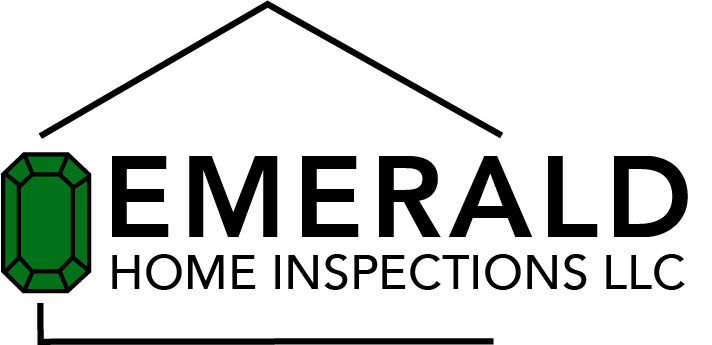
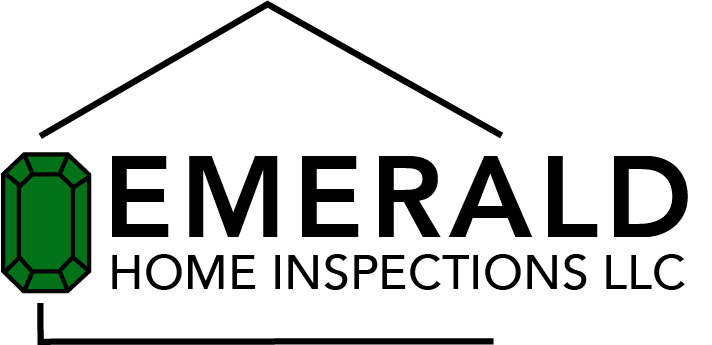
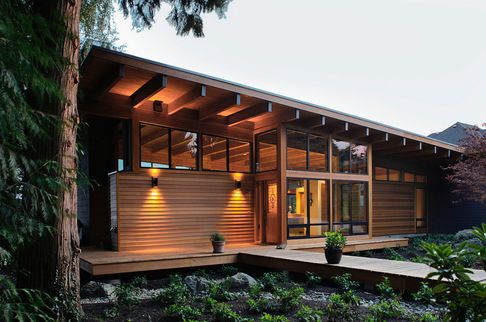

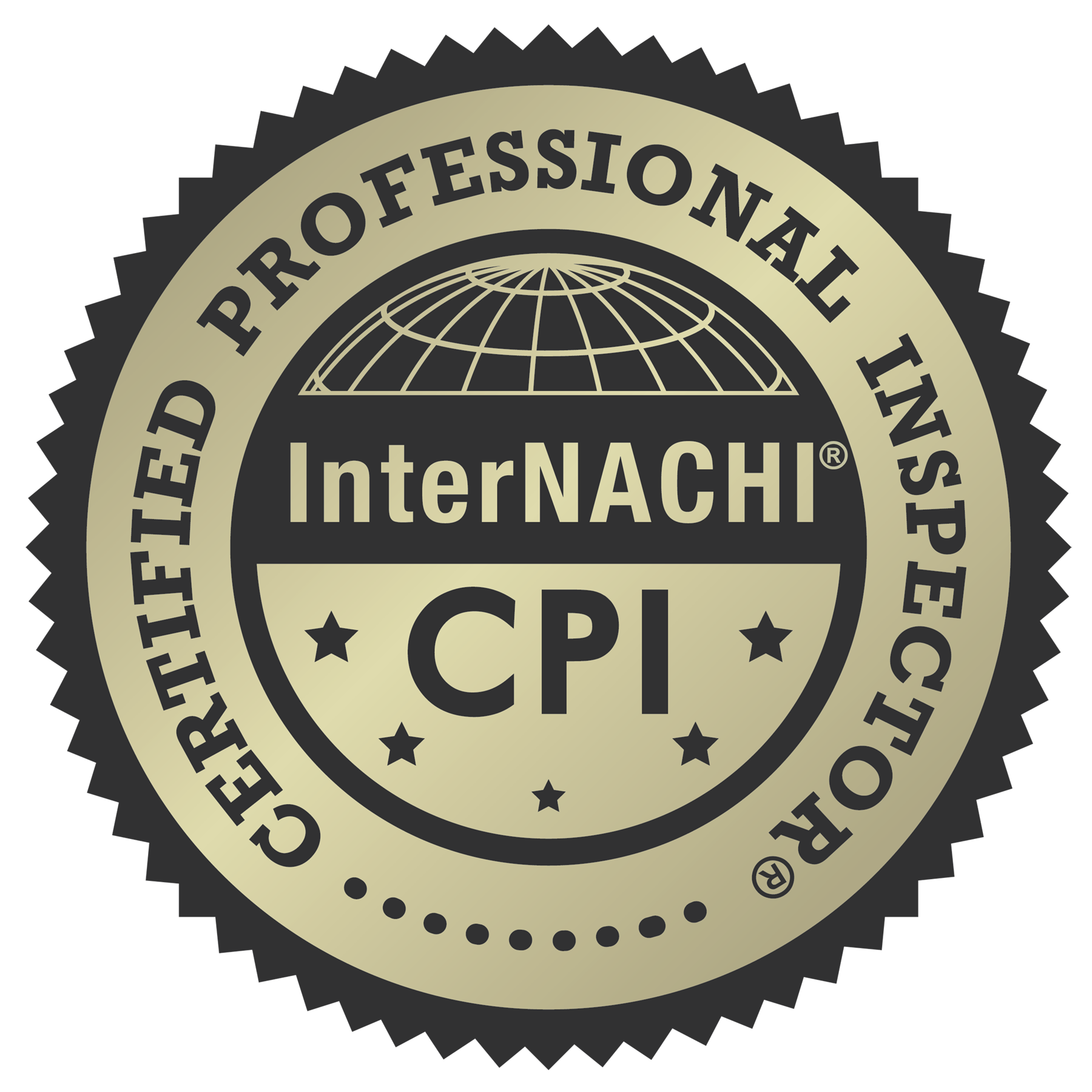
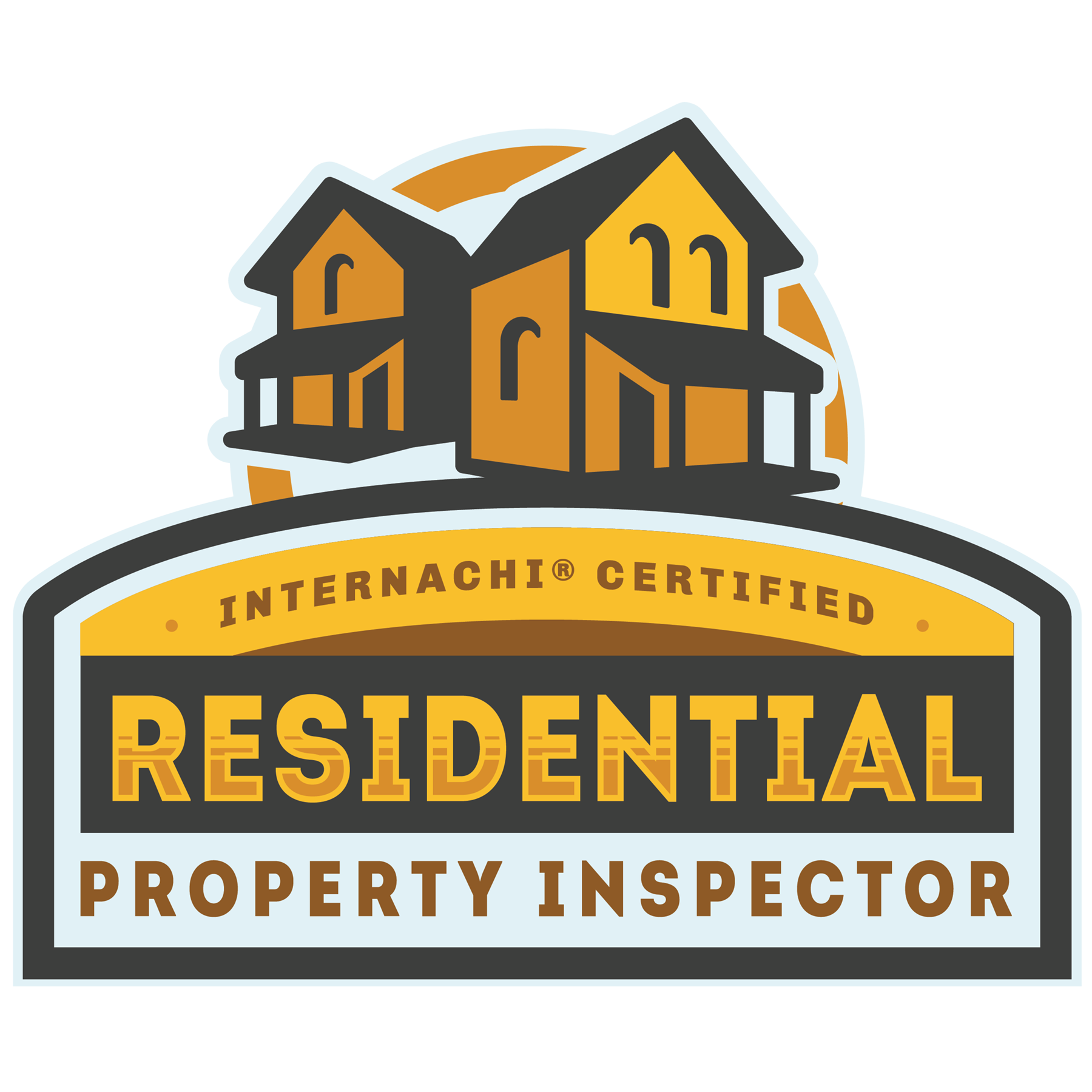
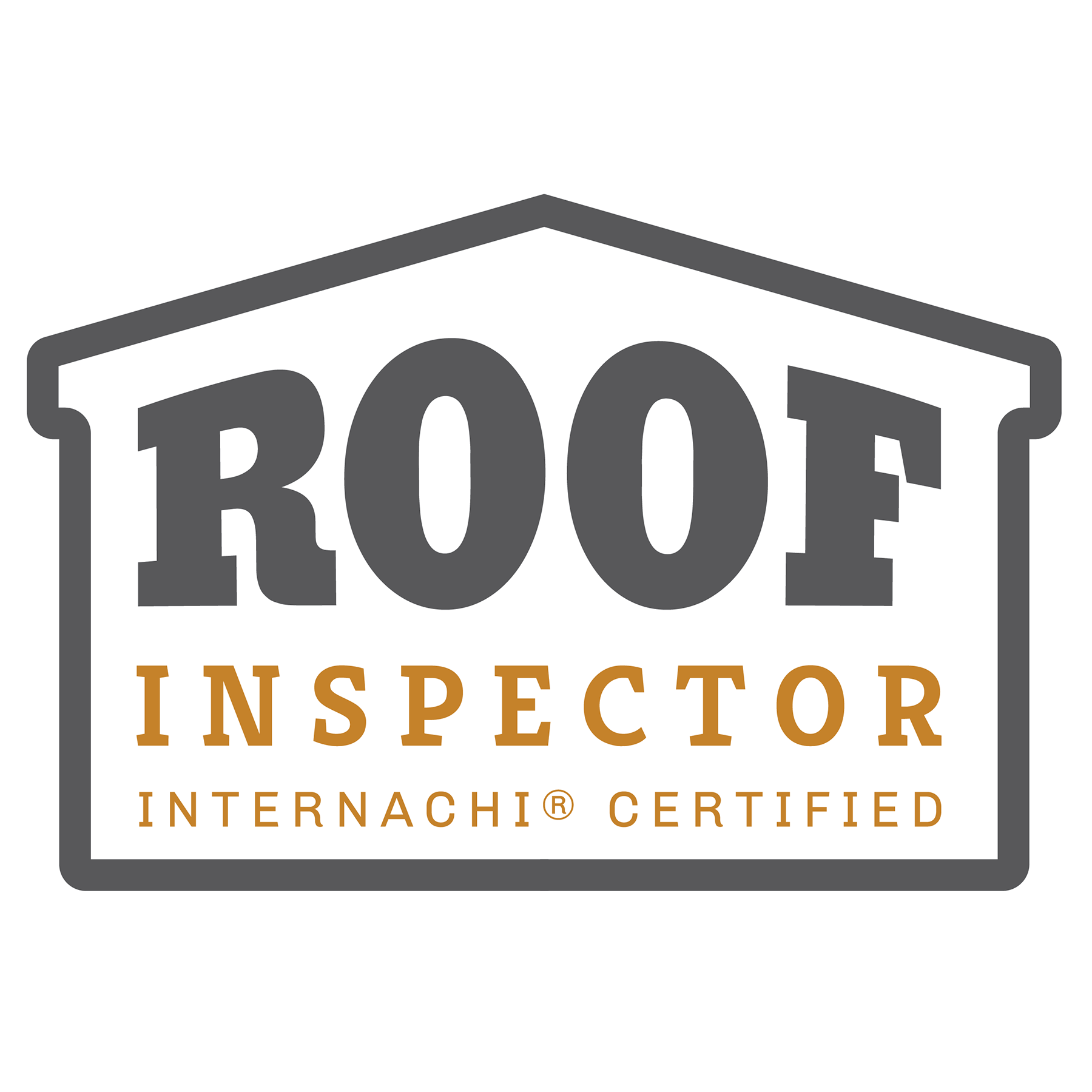
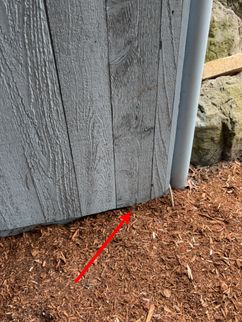
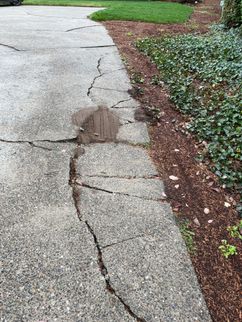
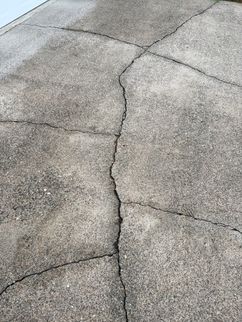
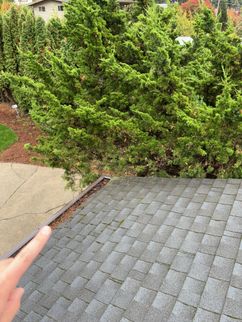
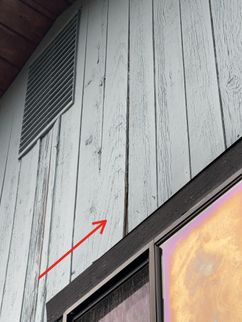
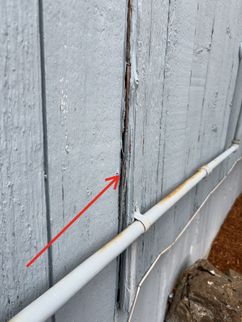
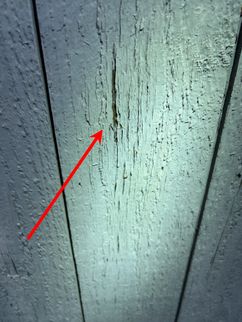
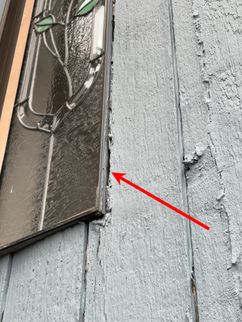
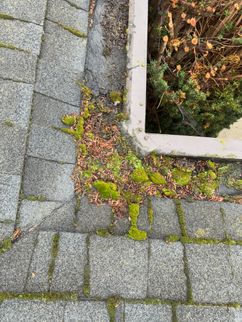
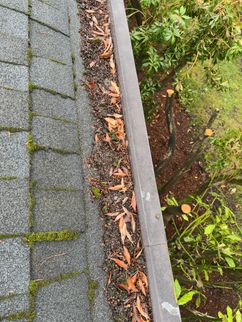
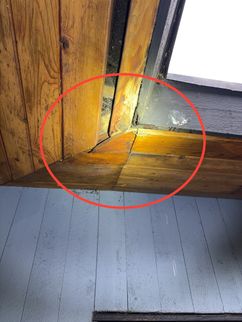
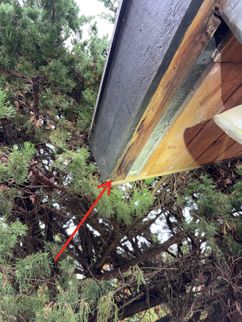
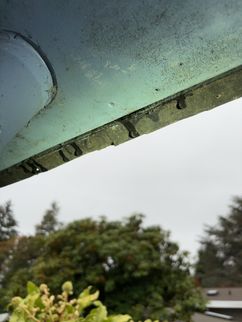
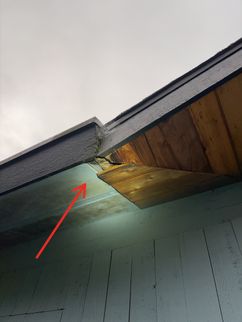
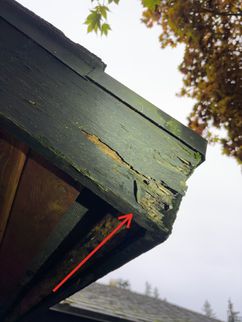
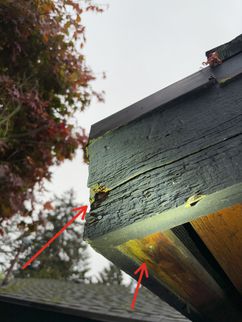
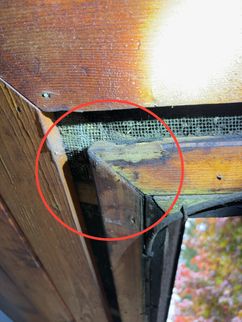

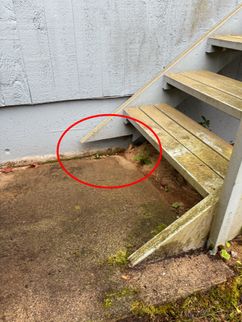
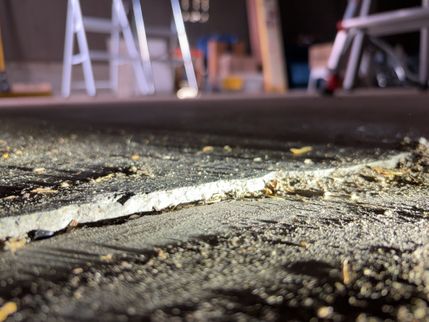
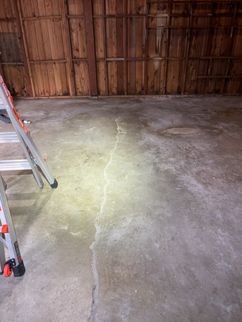
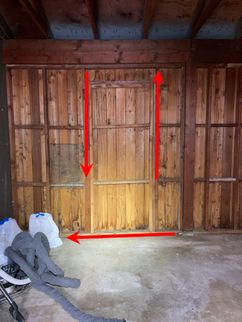
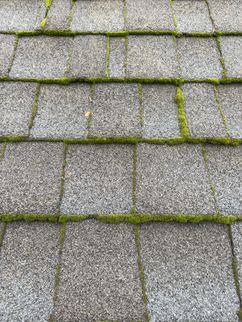
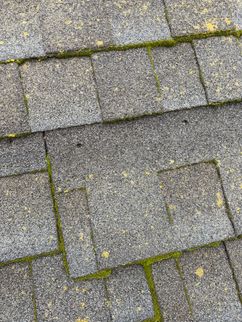
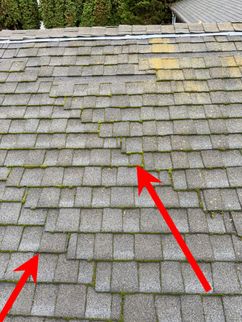
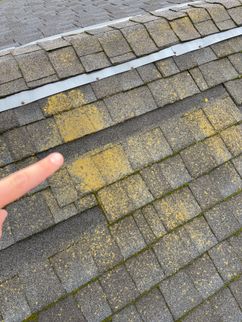
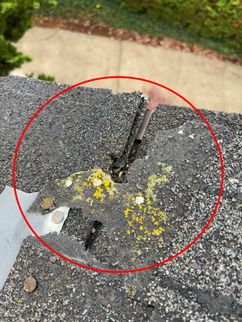
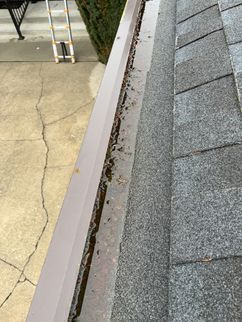
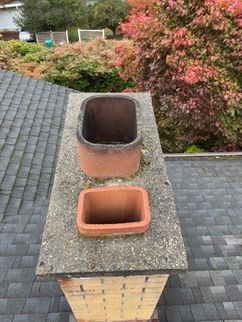
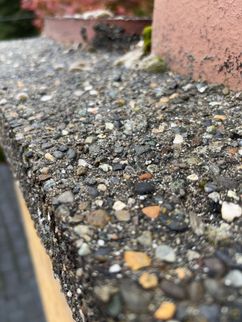
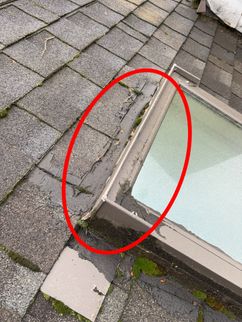
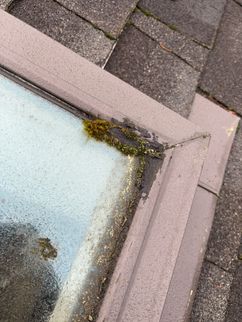
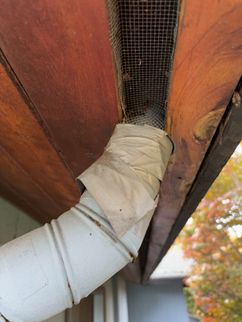
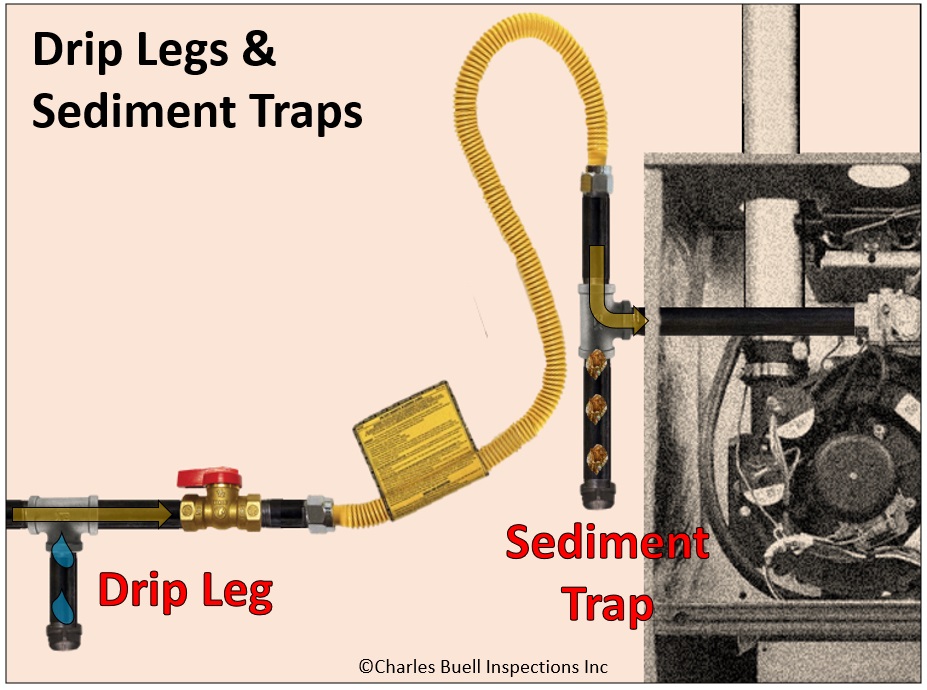
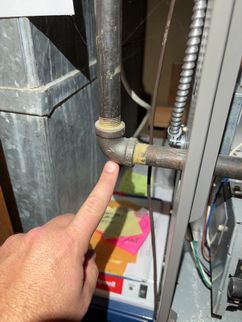
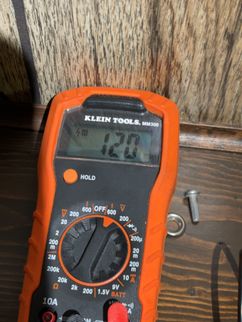
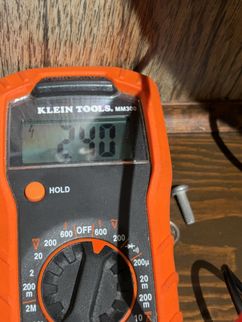
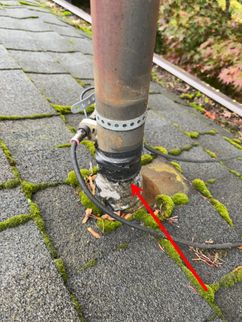
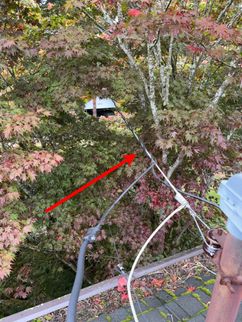
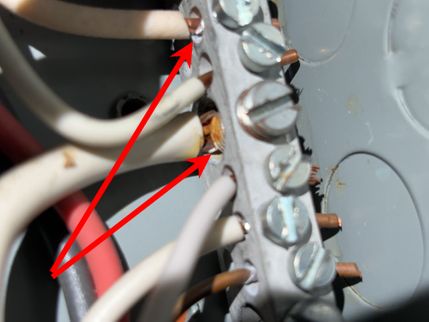
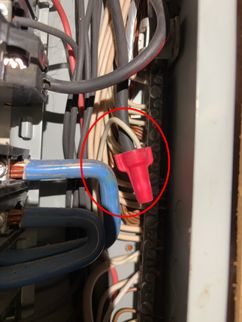
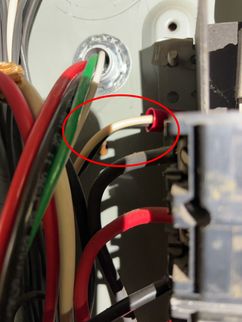
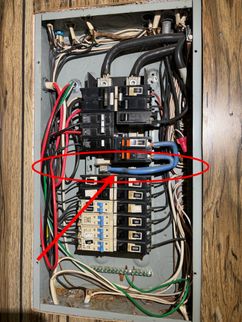





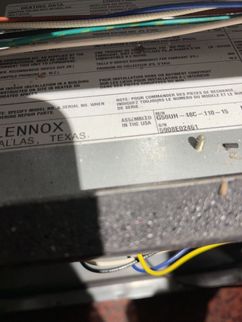
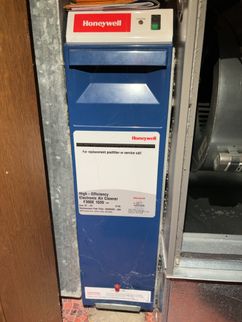
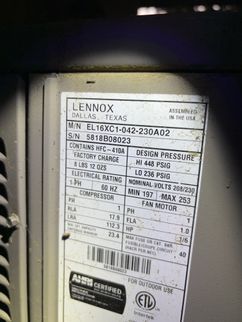
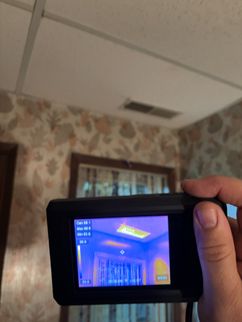
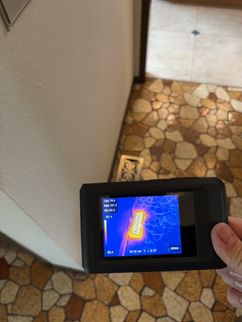
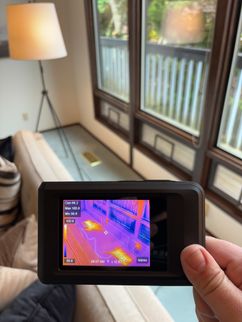
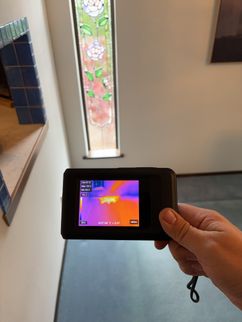
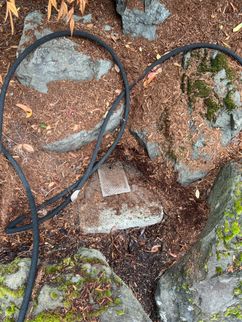
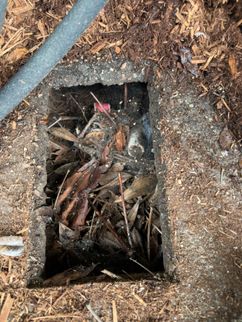
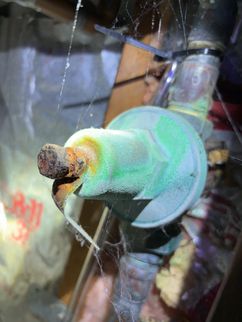
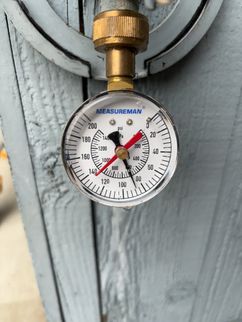

 (1) (1).jpg)
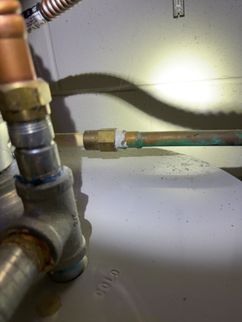
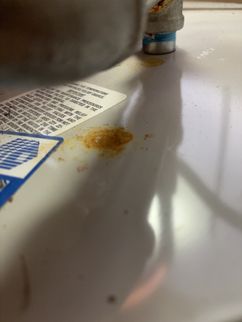
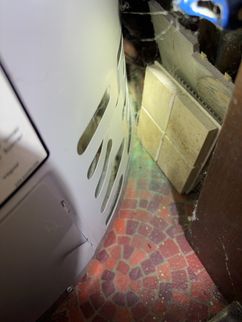
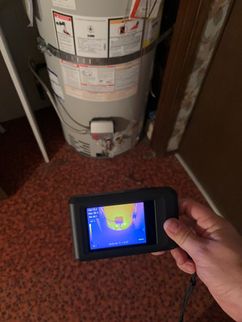
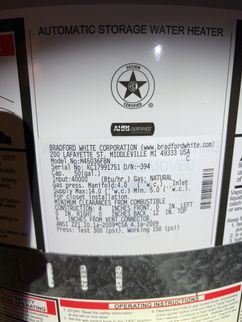
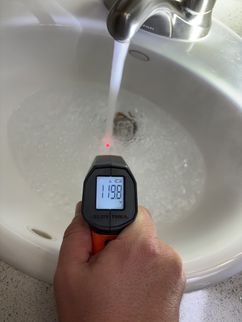
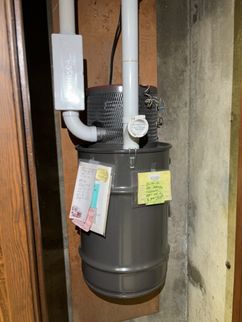
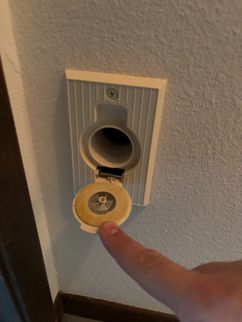
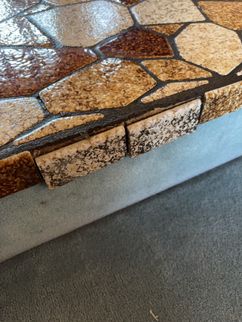
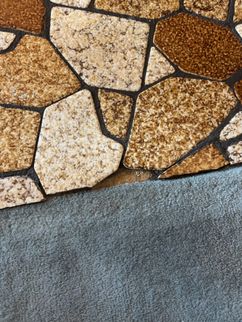
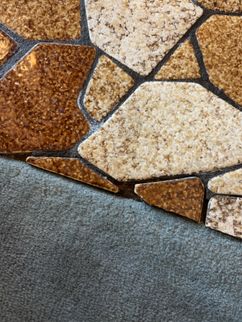
 (1).jpg)
 (1).jpg)
-700x500 (1) (1) (1).jpg)
 (1).jpg)
